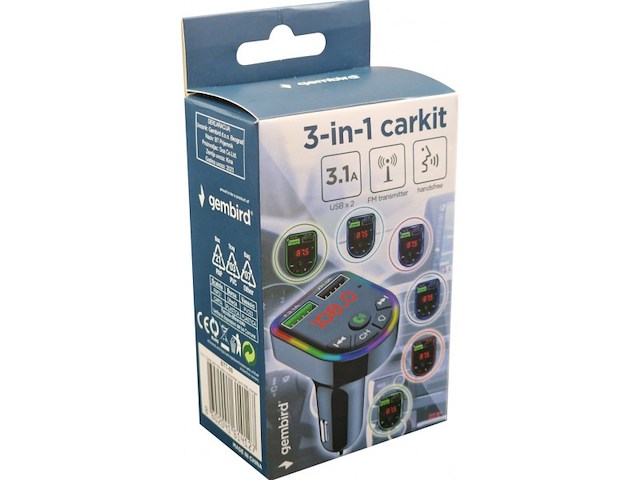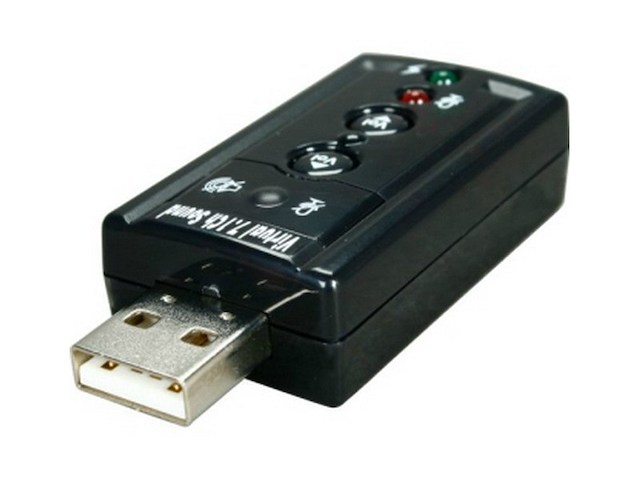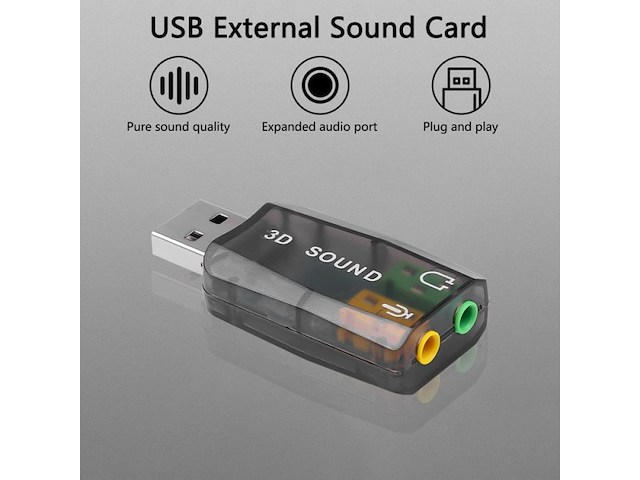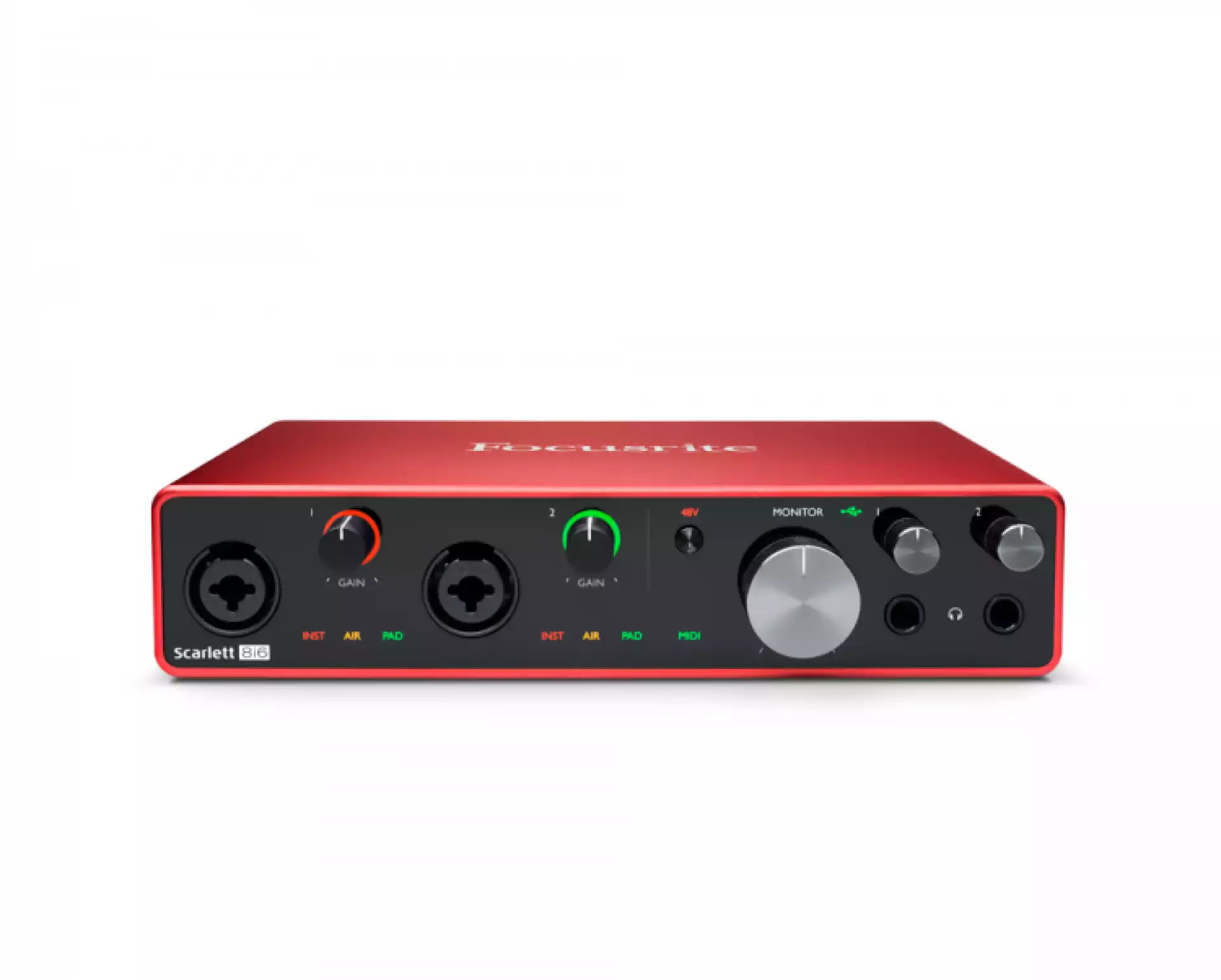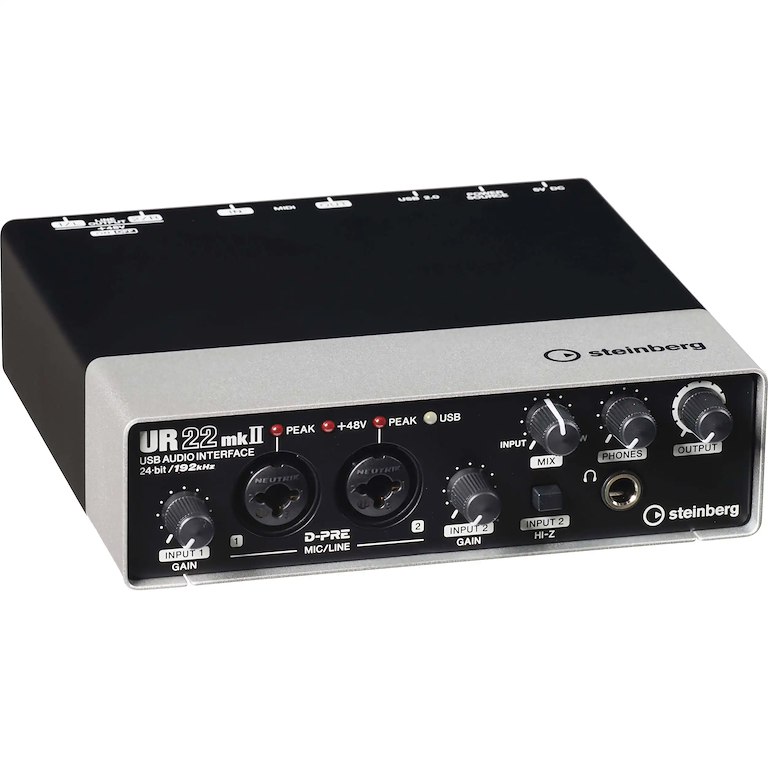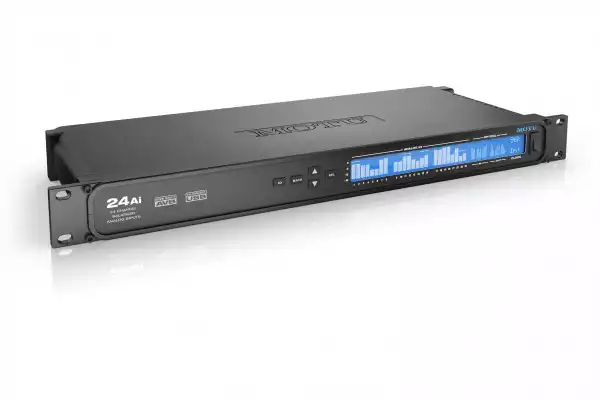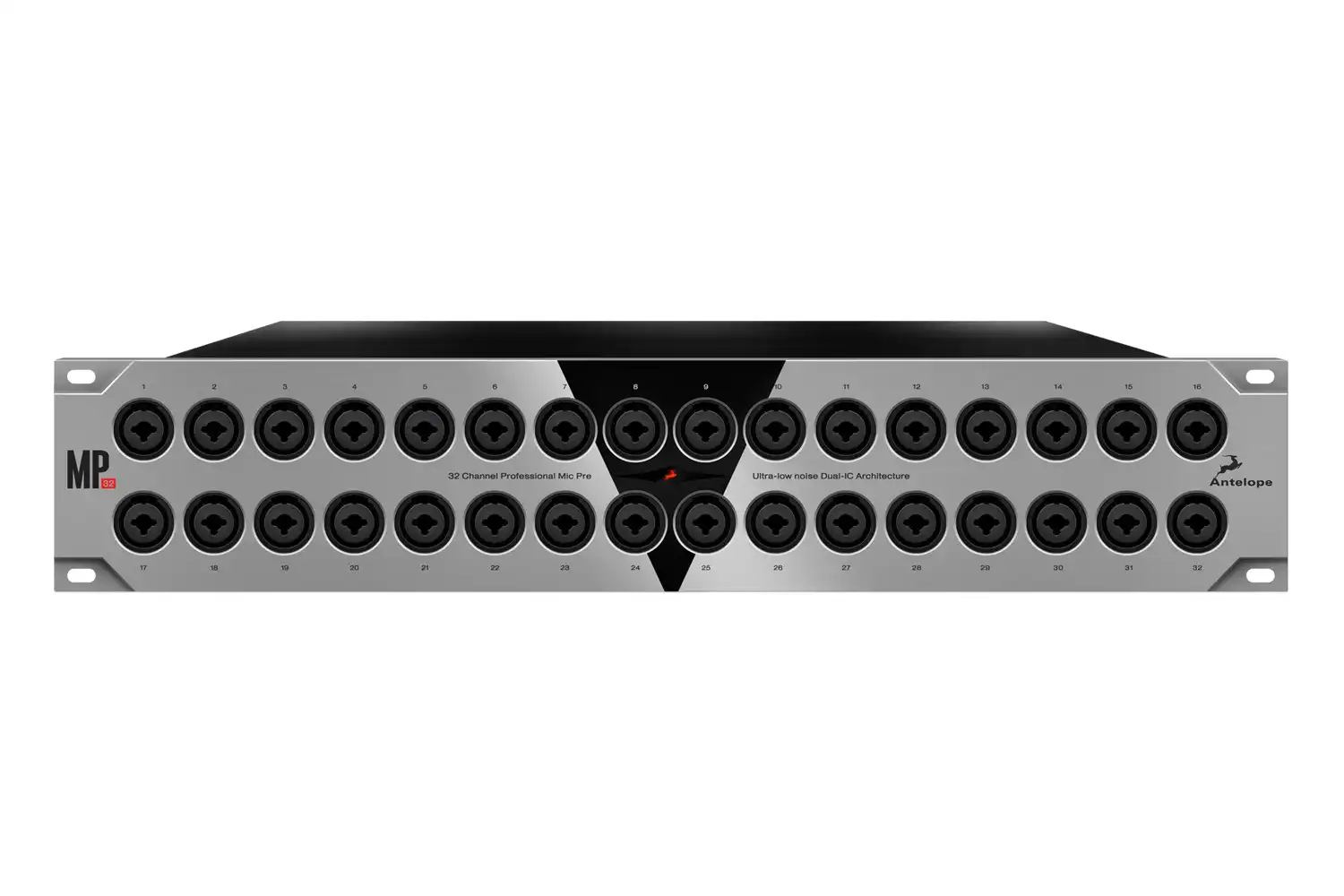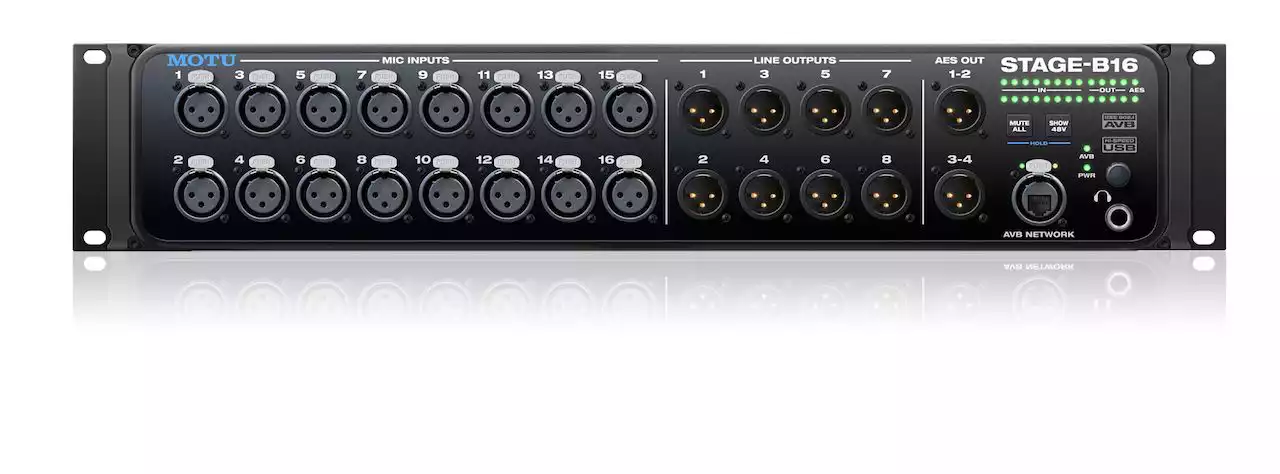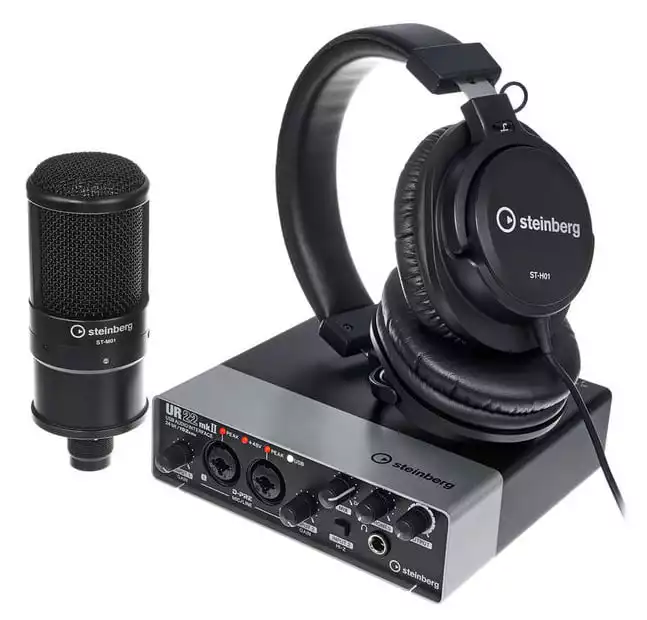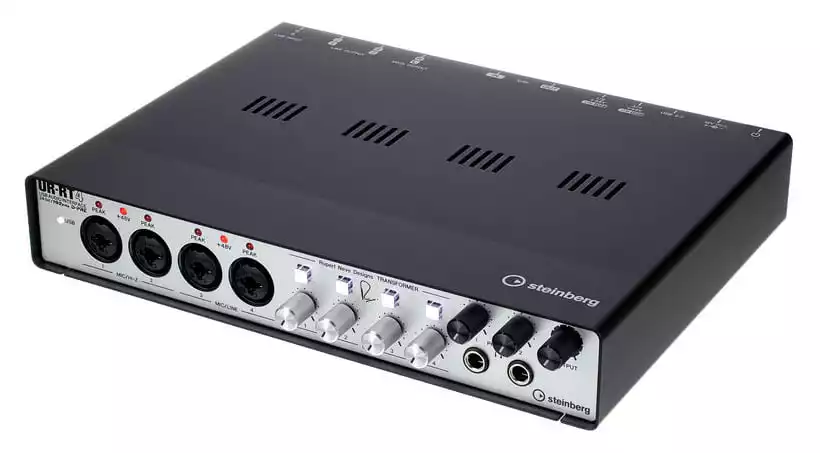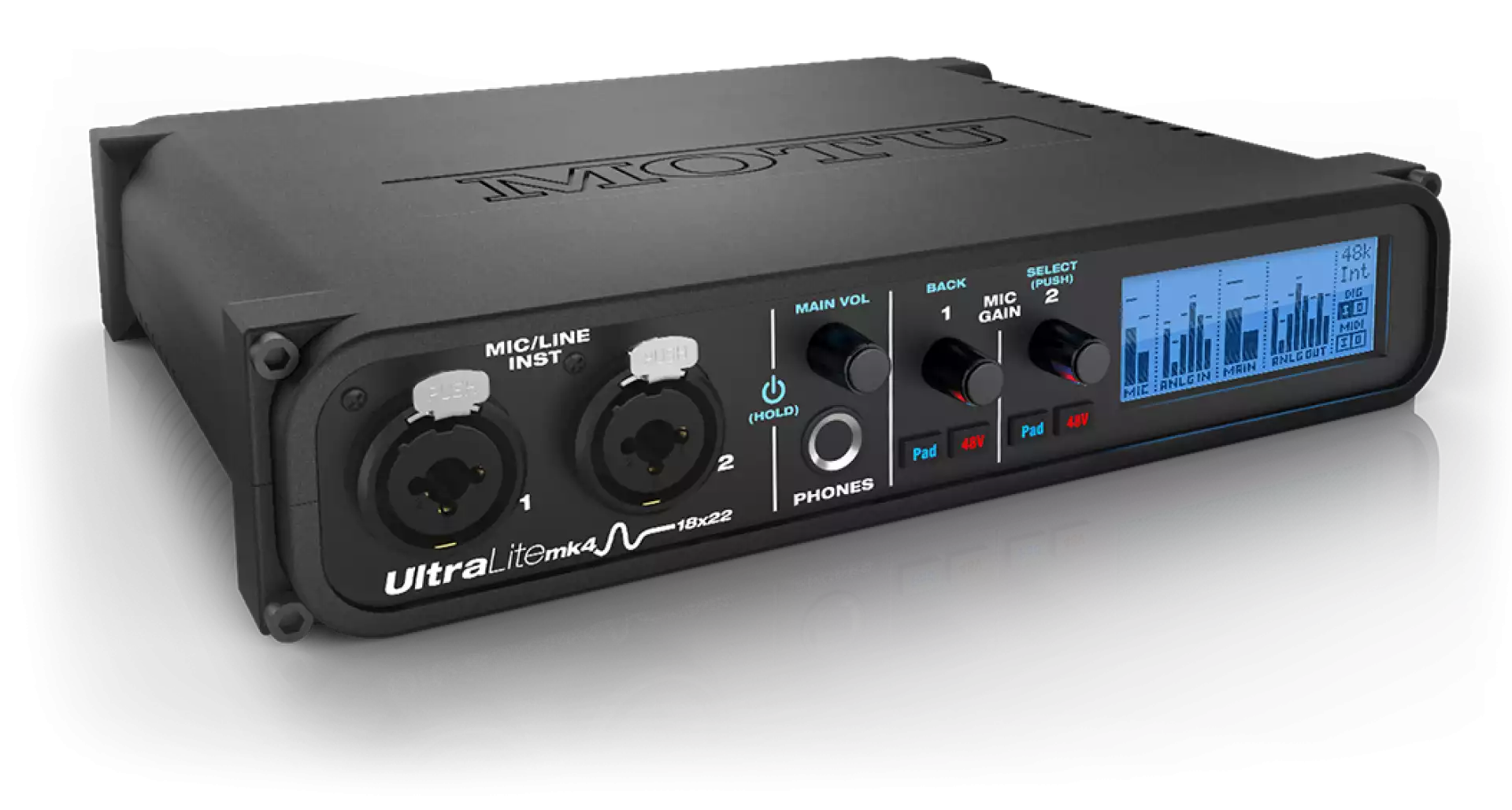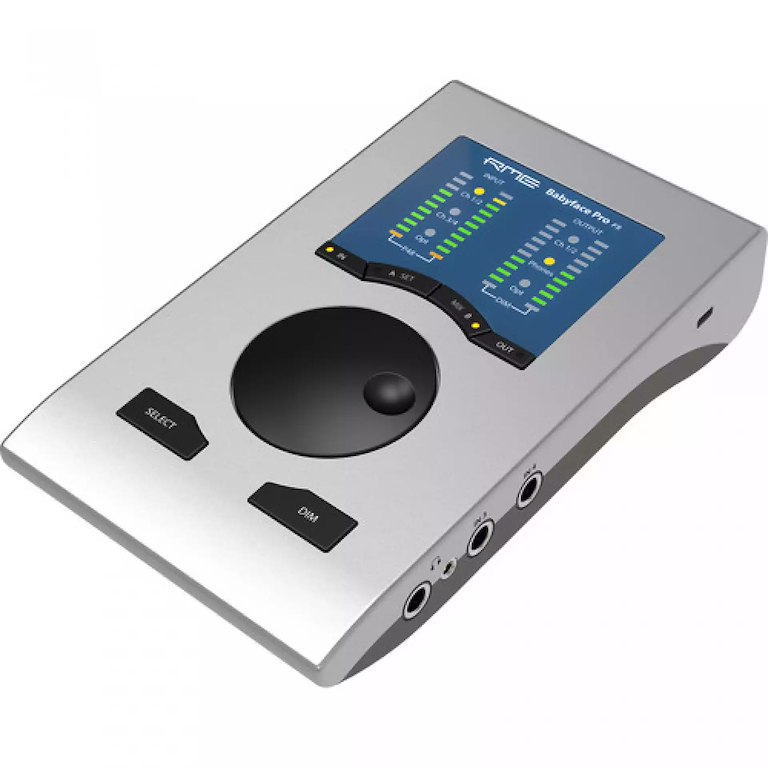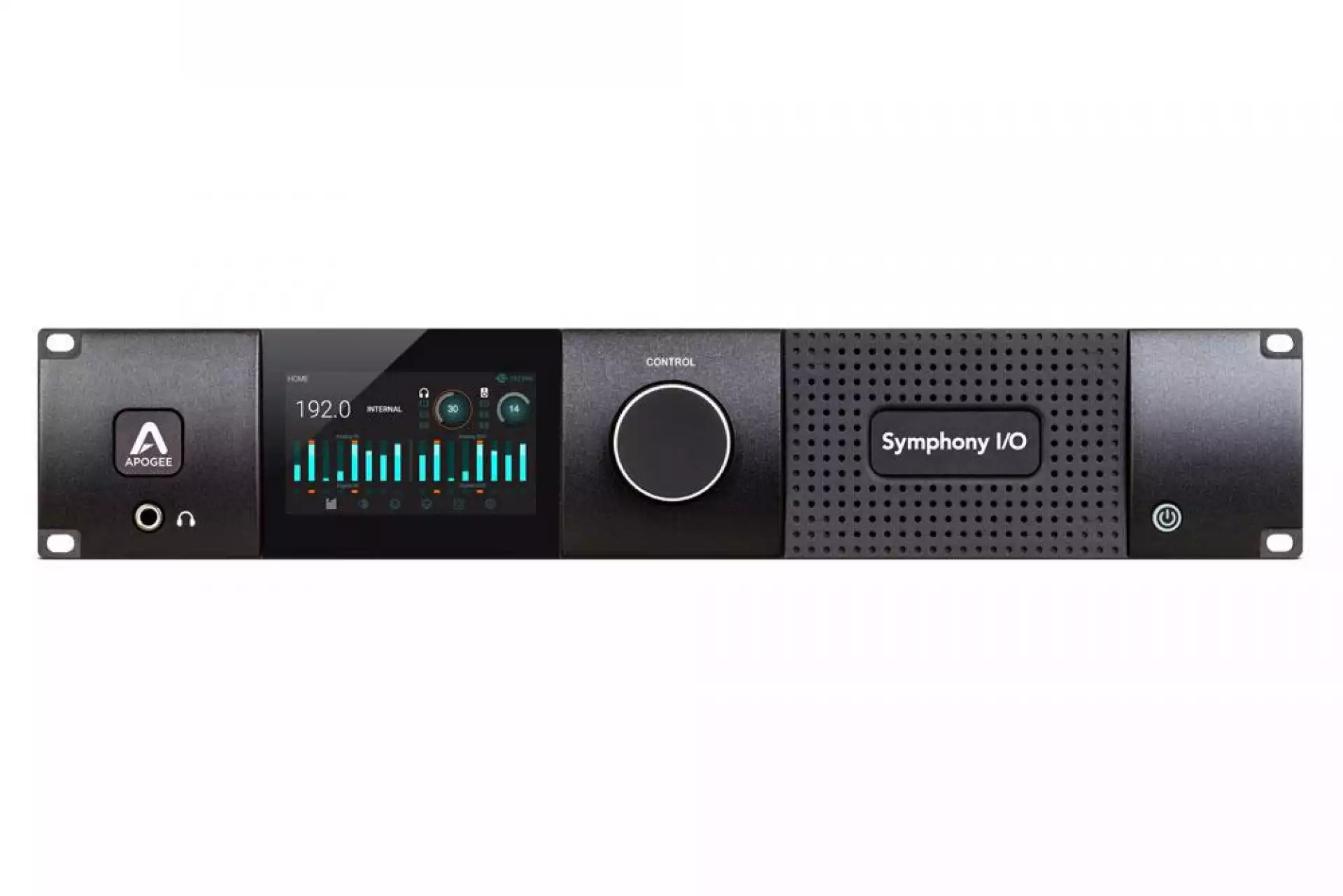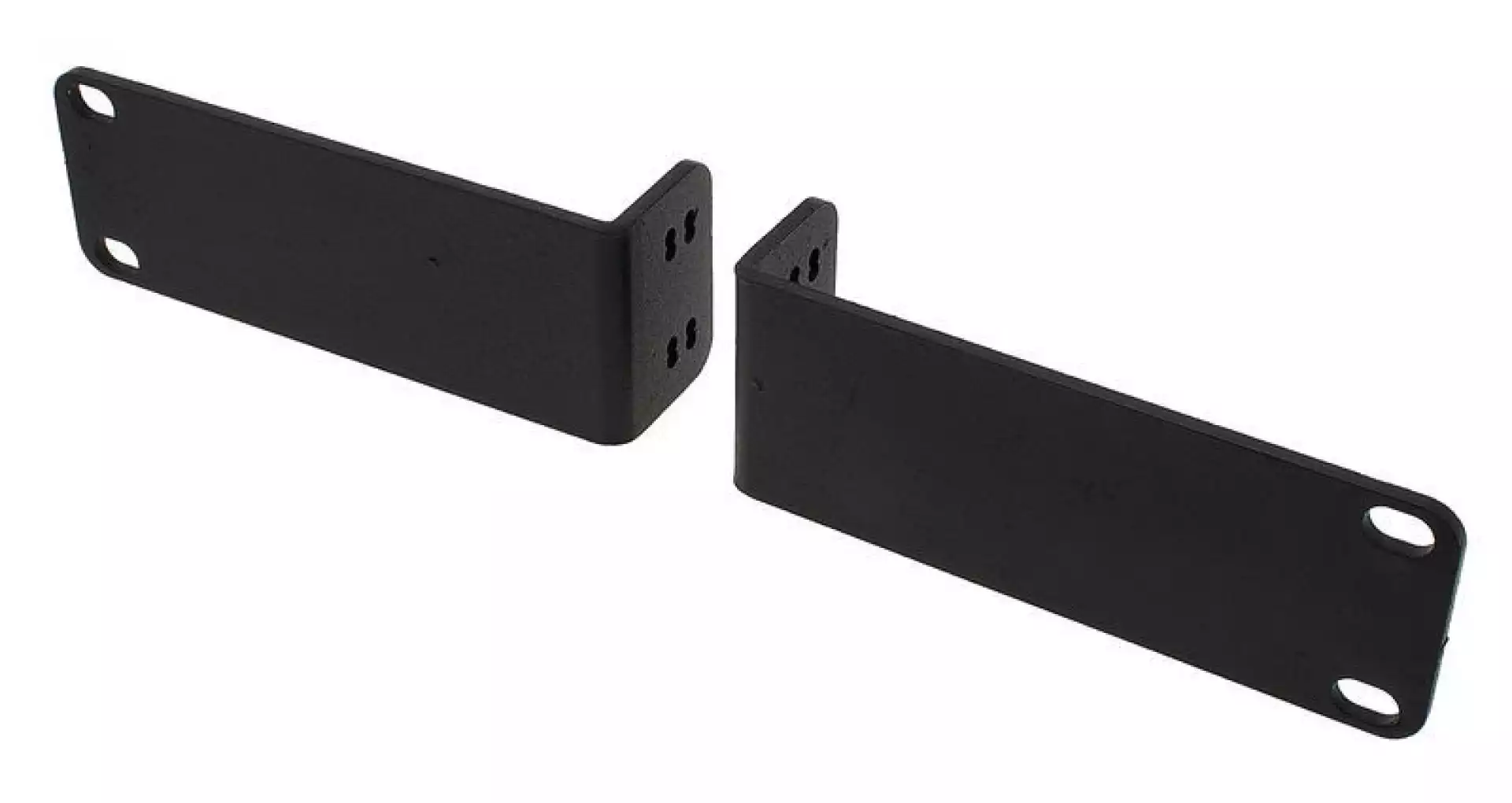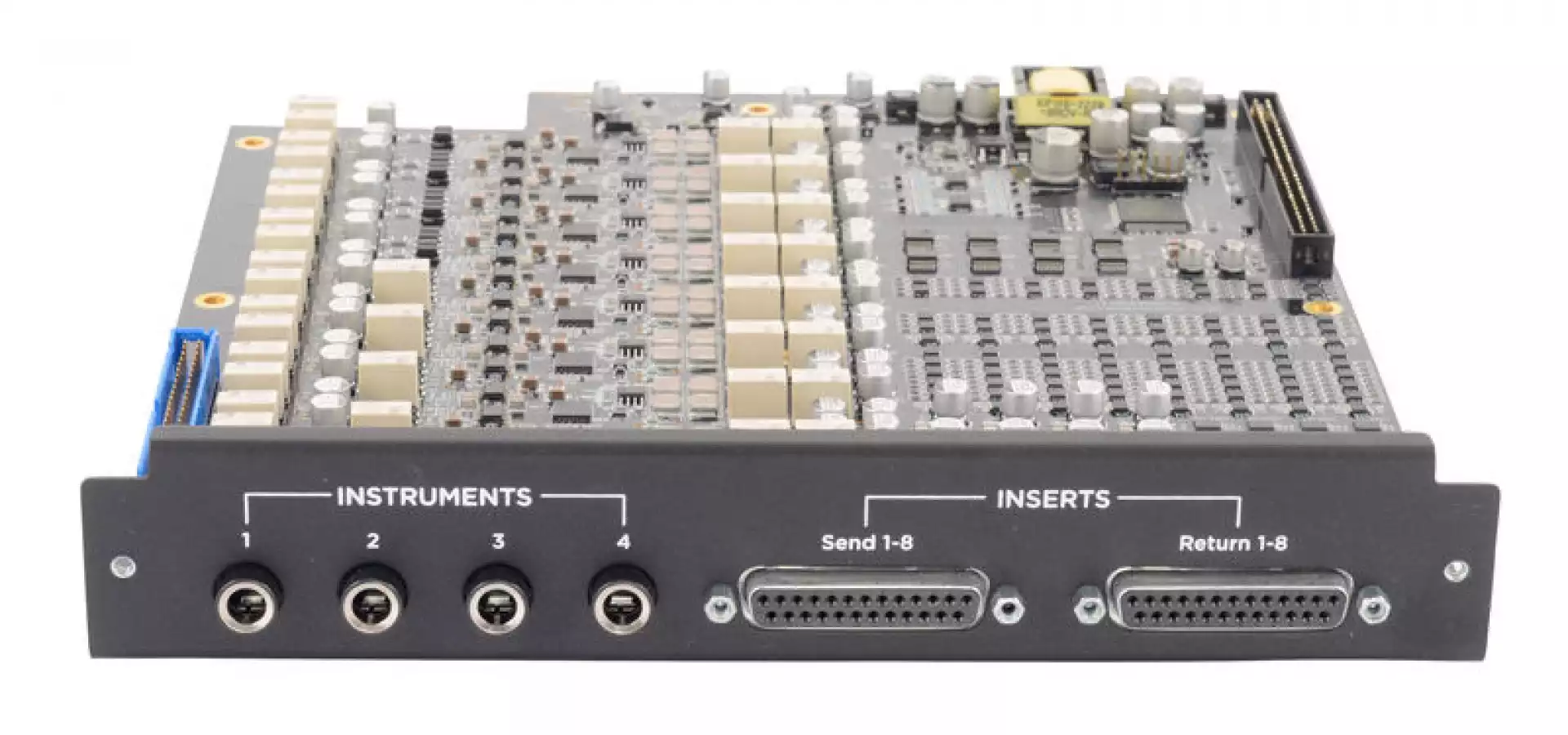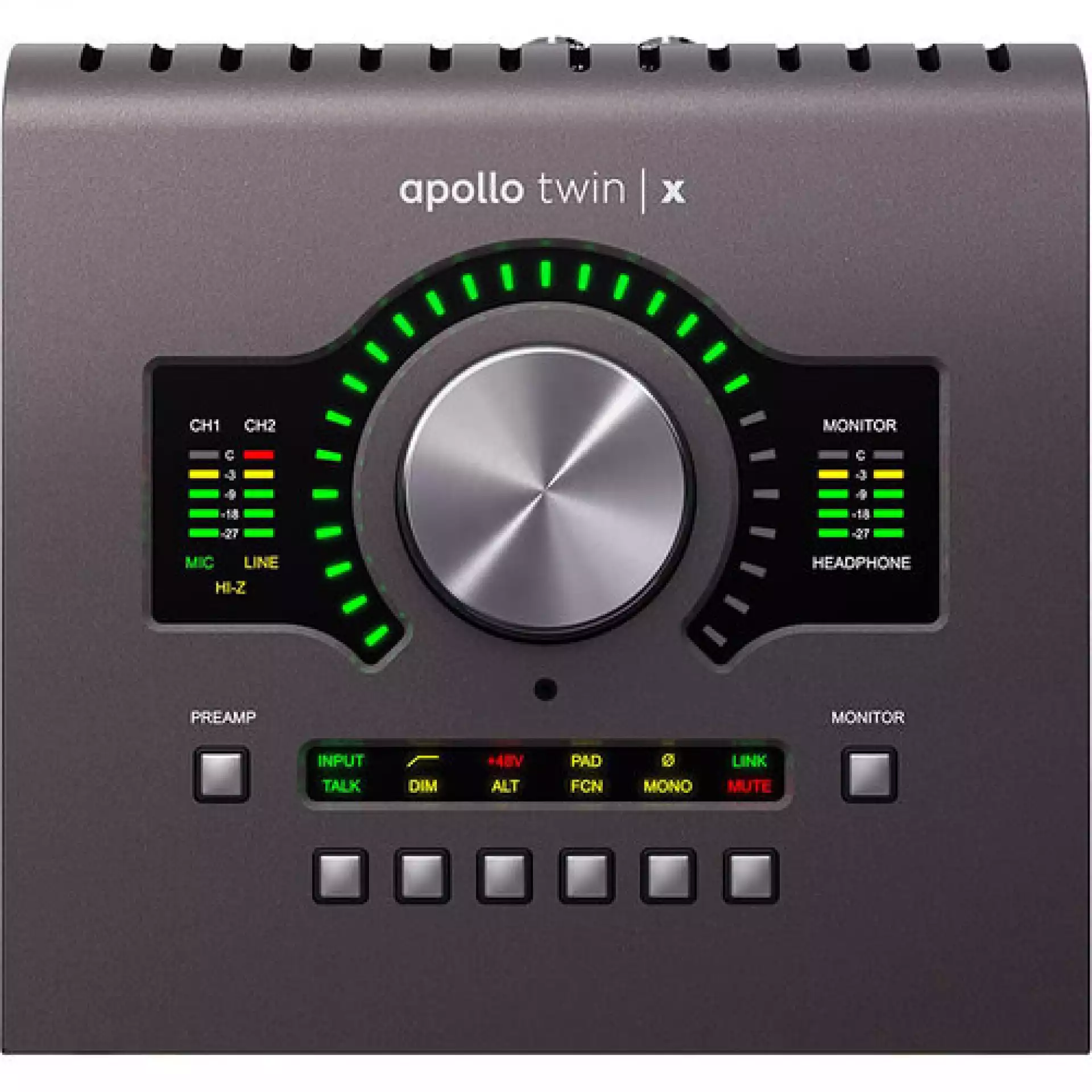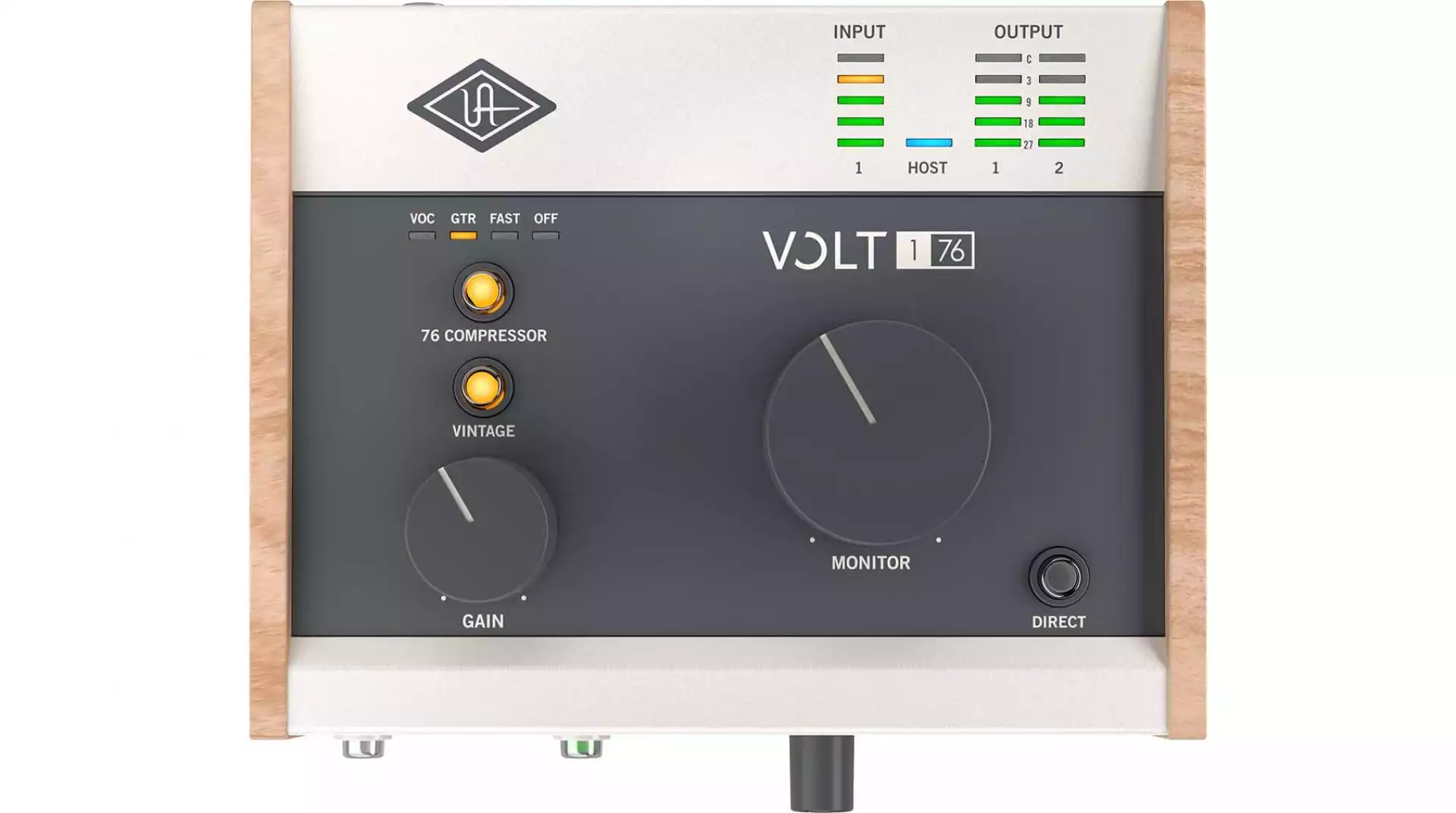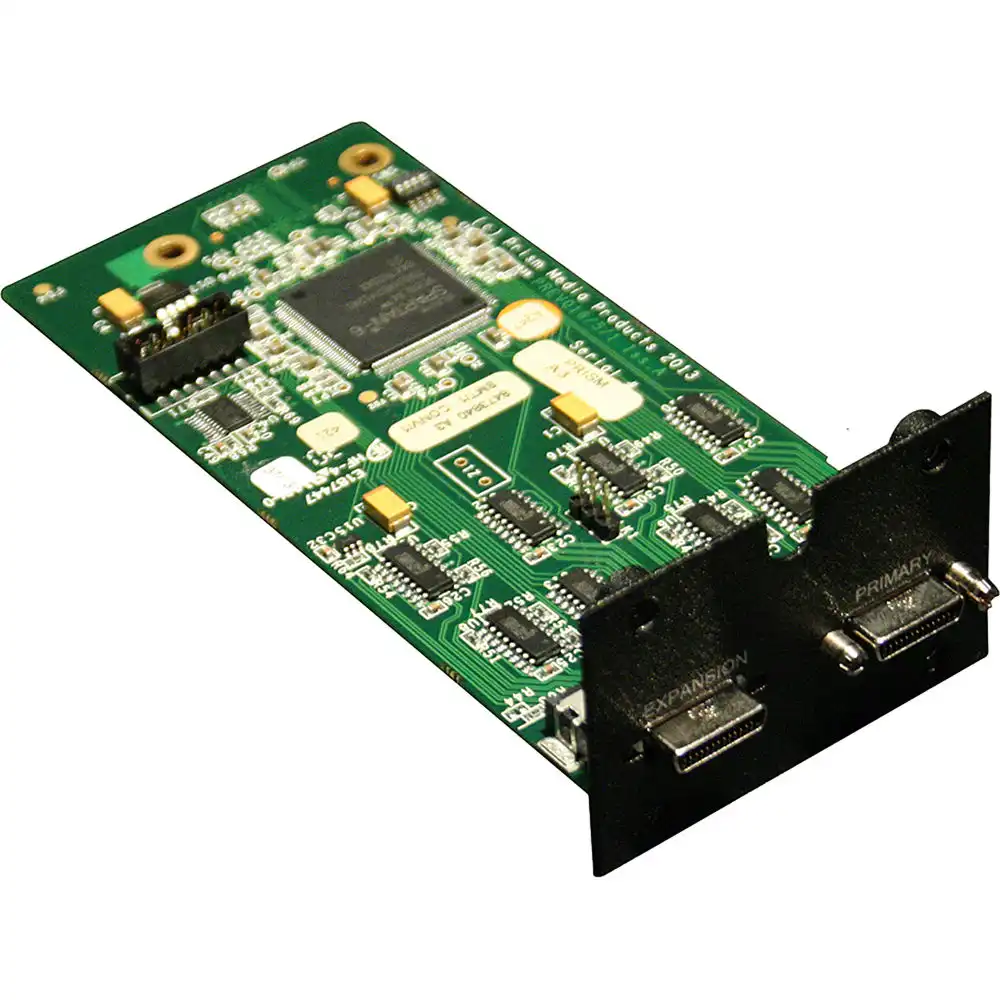Pratite promene cene putem maila
- Da bi dobijali obaveštenja o promeni cene potrebno je da kliknete Prati oglas dugme koje se nalazi na dnu svakog oglasa i unesete Vašu mail adresu.
76-100 od 294 rezultata
Režim promene aktivan!
Upravo ste u režimu promene sačuvane pretrage za frazu .
Možete da promenite frazu ili filtere i sačuvate trenutno stanje
Aktivni filteri
-
Tag
Zvučne kartice
BTT-09 ** Gembird 3-in-1 Bluetooth carkit with FM-radio transmitter and USB 3.1 A charger, blk (559)
Obavljajte bezbedne handsfree telefonske pozive. Strimujte svoju muziku bežicno na FM radio u automobilu. Savršeno za punjenje vašeg mobilnog telefona ili tableta. -BT transmiter komplet sa audio FM-radio predajnikom -Odlican full-duplex kvalitet zvuka -Dugme jednim dodirom za odgovaranje, odbijanje i ponovno biranje poziva -Ugradeni adapter za napajanje za upaljac za cigarete sa izlazom USB porta za punjenje mobilnih uredaja -USB MP3 audio plejer -Domet signala do 5 m Interfejs: BT v.5.0, A2DP, AVRCP, HFP profili Ulaz BT interfejsa: 2,402 - 2,480 GHz frekvencijski opseg FM-radio izlaz: FM-opseg 87,5 - 108,0 MHz DC ulaz: 12 - 24 V / do 45 mA (ogranicenje 9 - 30 V) Frekvencijski odziv zvuka: 20 Hz - 20 KHz, SNR: > 60 Db; izoblicenje: < 0,1 % USB izlazni portovi za punjenje: 5 V DC do 3,1 A i drugi port do 1 A USB MP3 audio plejer (MP3, VMA datoteke) Dimenzije: 79 x 47 x 36 mm Neto težina: 236g Sistemski zahtevi BT audio izvor (mobilni telefon, PDA, racunar, tablet) sa podrškom za striming muzike (A2DP profil) Obavljajte bezbedne handsfree telefonske pozive. Strimujte svoju muziku bežicno na FM radio u automobilu. Savršeno za punjenje vašeg mobilnog telefona ili tableta. -BT transmiter komplet sa audio FM-radio predajnikom -Odlican full-duplex kvalitet zvuka -Dugme jednim dodirom za odgovaranje, odbijanje i ponovno biranje poziva -Ugradeni adapter za napajanje za upaljac za cigarete sa izlazom USB porta za punjenje mobilnih uredaja -USB MP3 audio plejer -Domet signala do 5 m Interfejs: BT v.5.0, A2DP, AVRCP, HFP profili Ulaz BT interfejsa: 2,402 - 2,480 GHz frekvencijski opseg FM-radio izlaz: FM-opseg 87,5 - 108,0 MHz DC ulaz: 12 - 24 V / do 45 mA (ogranicenje 9 - 30 V) Frekvencijski odziv zvuka: 20 Hz - 20 KHz, SNR: > 60 Db; izoblicenje: < 0,1 % USB izlazni portovi za punjenje: 5 V DC do 3,1 A i drugi port do 1 A USB MP3 audio plejer (MP3, VMA datoteke) Dimenzije: 79 x 47 x 36 mm Neto težina: 236g Sistemski zahtevi BT audio izvor (mobilni telefon, PDA, racunar, tablet) sa podrškom za striming muzike (A2DP profil)
Usb prenosiva zvucna kartica 3.5mm ulaz za slusalice i mikrofon Ova USB zvučna kartica predstavlja izvanredno rešenje za situacije kada vaš uređaj nema ispravne audio ulaze. Bilo da je reč o mikrofonima, slušalicama ili zvučnicima, ova kartica omogućava kvalitetno povezivanje i reprodukciju zvuka putem USB porta. Ugrađeno digitalno pojačalo klase B. Podrška za 3D zvuk sa post-tonalnim efektima i virtuelni 5.1 CH zvučni zapis. Džek za zvučnike/slusalice i džek za mikrofon. Kompatibilno sa Windows 2000 / XP, kao i sa Windows 10 i Windows 11 operativnim sistemima. Paket Sadrži: 1 x USB Audio Zvučna Kartica Adapter usb 2.0
-
Tehnika chevron_right Audio, TV i foto
PRIKLJUČEN, UKLJUČEN Priključite i svirajte; sve Vaše instrumente, sve vreme. Sa dva pretpojačala treće generacije, šest fiksnih linijskih ulaza i četiri balansirana izlaza– za sintisajzere, ritam mašine i luping u hardver efektima – 8i6 je spreman za snimanje gde god da se nalazite. Provedite više vremena svirajući a manje vremena za priključivanje. VAŠI SNIMCI SE RAZVIJAJU VEĆ 30 GODINA Mi proizvodimo pretpojačala za mikrofone već 30 godina, a pretpojačala treće generacije su najbolja za koje je Scarlett ikad čuo. 24-bitni/192kHz konverteri omogućavaju da Vaši snimci budu jasni i precizni. Air modalitet unosi živost u vokale, dodavajući jedinstvene precizne detalje. Decenije našeg iskustva znače da Scarlett zvuči baš kao i Vi. NAPRAVITE NEVEROVATNE SNIMKE Sa dualnim Scarlett 18i20 ADAT optičkim ulaznim i izlaznim portovima, možete proširiti Vaše sposobnosti za snimanje i miksovanje, dodavajući do 8 dodatnih ulaznih i izlaznih priključaka od 48kHz ili 96kHz uz pomoć pretpojačala za mikrofon kao što je Scarlett OctoPre ili Scarlett OctoPre Dynamic, ili četiri kanala na 192kHz. To je više nego dovoljno kanala da se ozvuči mikrofonom ceo bend i usmeri potpuni miks u konzolu ili zbrajni okvir. OVO JE NAČIN ZA VAŠE ZVUČNO OGLAŠAVANJE Focusrite Control omogućava Vam da na jednostavan način usmerite Vaš audio i zvučni miks, povratnu petlju (loopback) i monitor mikseve, sa Vaših Mac®, PC, iPad®, iPhone® ili iPod touch® uređaja. Pošaljite, strimujte, uzorak – jednostavno. NAŠA TEHNOLOGIJA JE ZVUK Neverovatno pouzdan, Focusrite hardver Vas neće izneveriti. Ukoliko pak naiđete na problem, možete se osloniti na naš globalni tim za podršku i dvogodišnu garanciju kako bi se problem rešio. Zvuk. SVI ALATI KOJI SU VAM POTREBNI ZA PRODUKCIJU, NA ISPRAVAN NAČIN, ODMAH Vaš 8i6 audio interfejs dolazi sa celokupnim asortimanom softvera za snimanje, zvukovima i priključcima koje možete odabrati: Avid® Pro Tools® | First Focusrite Creative Pack: stotine virtuelnih instrumentalnih zvukova, 500MB lupova, i efekata sjajnog zvuka Ableton® Live Lite™: vodeći softver za snimanje muzike u industriji Tromesečna Splice Sounds pretplata: Pristupite milionima snimaka, lupova i zvučnih preseta visokog kvaliteta, bez plaćanja autorskih prava, sa svakodnevnim novim izdanjima XLN Audio Addictive Keys: Pristupite jednoj od četiri virtuelne tastature kada registrujete vaš prvi Focusrite ili Novation hardver. Softube Time and Tone Bundle: tri od Softube eha svetske klase, priključaka za odlaganje i distorziju kao i mastering alatka laka za upotrebu Focusrite Crveni Plug-in Suite: precizno oblikuje naš klasični Red 2 ekvilajzer i Red 3 kompresor Focusrite Control: usmerite Vaš audio i cue miks, povratnu petlju i monitor mikseve, sa Vaših Mac®, PC, iPad®, iPhone® ili iPod touch uređaja. DETALJNE SPECIFIKACIJE Uvek navodimo vrednosti performansi 'iz stvarnog sveta' (merene prema AES17 standardu). Neke kompanije navode čipset performanse, što može dovesti do zabune, a evo i zašto. Da biste provetili podržane operativne sisteme, kliknite ovde. PODRŽANE FREKVENCE UZORKOVANJA 44.1kHz, 48kHz, 88.2kHz, 96kHz, 176.4kHz, 192kHz ULAZI ZA MIKROFON Frekventni odziv 20Hz - 20kHz ± 0.1dB Dinamički opseg 111dB (A-weighted) THD+N <0.0012% Buka EIN -128dBu (A-weighted) Maksimalna ulazna jačina 9dBu (pri minimalnoj jačini) Opseg jačine 56dB Impedansa 3kΩ LINIJSKI ULAZI 1-2 (PROMENLJIVA JAČINA) Frekventni odziv 20Hz - 20kHz ± 0.1dB Dinamički opseg 110.5dB (A-weighted) THD+N <0.002% Maksimalna ulazna jačina 22dBu (pri minimalnoj jačini) Opseg jačine 56dB Impedansa 60kΩ LINIJSKI ULAZI 3-6 (FIKSNA JAČINA) Frekventni odziv 20Hz - 20kHz ± 0.1dB Dinamički opseg 110.5dB (A-weighted) THD+N <0.002% Maksimalna ulazna jačina 18dBu (at minimum gain) Impedansa 44kΩ ULAZI ZA INSTRUMENTE Frekventni odziv 20Hz - 20kHz ± 0.1dB Dinamički opseg 110dB (A-weighted) THD+N <0.03% Maksimalna ulazna jačina 12.5dBu (pri minimalnoj jačini) Opseg jačine 56dB Impedansa 1.5MΩ LINIJSKI/IZLAZI ZA MONITOR Dinamički opseg (linijski izlazi) 108dB THD+N <0.002% Maksimalna izlazna jačina (0 dBFS) 15.5dBu Impedansa 430Ω IZLAZI ZA SLUŠALICE Dinamički opseg 104dB (A-weighted) THD+N <0.002% Maksimalna izlazna jačina 7dBu Impedansa <1Ω
-
Tehnika chevron_right Audio, TV i foto
AKCIJA VAŽI ZA GOTOVINSKO PLAĆANJE! US-16X08 SPECIFICATIONS Sampling frequency 44.1k/48k/88.2k/96kHz Quantization bit rate 16/24bit Analog audio inputs MIC IN(IN 1-8) Connector XLR-3-31(1:GND, 2:HOT, 3:COLD), BALANCED Input impedance 2.4k ohms Nominal input level GAIN:MAX -68dBu (0.0003Vrms) GAIN:MIN -12dBu (0.195Vrms) Maximum input level +8dBu (1.947Vrms) Gain 56dB INST IN (IN 9-10) Connector 6.3mm(1/4") TS-jack(T:HOT, S:GND), UNBALANCED (When set to "INST" at LINE/INST switch) Input impedance 1M ohms or more Nominal input level GAIN:MAX -57dBV (0.0014Vrms) GAIN:MIN -12dBV (0.251Vrms) Maximum input level +8dBV (0.2512Vrms) Gain 45dB LINE IN (IN 9-10) Connector 6.3mm(1/4") TRS-jack(T:HOT, R:COLD, S:GND), BALANCED (When set to "LINE" at LINE/INST switch) Input impedance 10k ohms Nominal input level GAIN:MAX -41dBu (0.0069Vrms) GAIN:MIN +4dBu (1.228Vrms) Maximum input level +24dBu (12.182Vrms) Gain 45dB LINE IN (IN 11-16) Connector 6.3mm(1/4") TS-jack(T:HOT, S:GND), UNBALANCED (When set to "-10dBV" at LEVEL switch) Input impedance 10k ohms or more Nominal input level -10dBV (0.3162Vrms) Maximum input level +10dBV (3.162Vrms) LINE IN (IN 11-16) Connector 6.3mm(1/4") TRS-jack(T:HOT, R:COLD, S:GND), BALANCED (When set to "+4dBu" at LEVEL switch) Input impedance 10k ohms Nominal input level +4dBu (1.228Vrms) Maximum input level +24dBu (12.182Vrms) Analog audio outputs LINE OUT (LINE OUT 1-8) Connector 6.3mm(1/4") TRS-jack(T:HOT, R:COLD, S:GND), BALANCED Output impedance 100ohms Nominal output level +4dBu (1.228Vrms) Maximum output level +24dBu (12.177Vrms) PHONES Connector 6.3mm(1/4") stereo phone jack Maximum output level 70mW+70mW or more (THD+N 0.1% or less, 32ohms loaded) MIDI IN / OUT Connector Din 5-pin Format Standard MIDI format USB Connector USB B type 4-pin Format USB2.0 HIGH SPEED mass storage class Power Dedicated AC adapter (GPE248-120200-Z, included) Power consumption 12W Dimensions 52" W ×2.32" H ×8.62" D inch 445mm W ×59mm H ×219mm D Weight 2.8kg / 6.11lb Operating temperature 5 to 35˚C Accessories Rack mount adapter, USB cable, User's manual, warranty card, dedicated AC adapter (GPE248-120200-Z) Audio performance Frequency response LINE OUT(BALANCED) 44.1k/48k Hz 20Hz to 20kHz, +/-0.3dB(JEITA) 88.2k/96k Hz 20Hz to 40kHz, +/-0.3dB(JEITA) THD 0.008% or less S/N ratio 100dB or more Crosstalk 100dB or more EIN -125dBu or less Computer system requirements Windows OS Windows 7(32-bit SP1, 64-bit SP1), Windows 8.0(32-bit, 64-bit), Windows 8.1(32-bit, 64-bit) * For further information of the latest OS version, please click here. Compatible computers Windows-compatible computer with a USB 2.0 port CPU type/speed Dual core/2 GHz or faster Memory 2GB or more DRIVER ASIO2.0, WDM(MME) Macintosh OS OS X Mountain Lion(10.8), OS X Mavericks(10.9) * For further information of the latest OS version, please click here. Compatible computers Apple Macintosh computer with a USB 2.0 port CPU type/speed Dual core/2 GHz or faster Memory 2GB or more DRIVER Core Audio, Core MIDI
-
Tehnika chevron_right Audio, TV i foto
The UR22mkII from Steinberg is a two-input, two-output USB 2.0 audio interface that features dual D-PRE microphone preamps coupled with 24-bit/192 kHz converters. With a dedicated high-impedance switch, a separate headphone jack, and phantom power supply, the unit is perfect for mobile musicians, touring DJs, or the small personal writing studio. Additionally, the unit can be switched to CC (Class Compliant) mode, allowing the interface to work with the iPad 2 or later. This feature requires Apple's iPad Camera Connection Kit (iPad 2nd and 3rd generation) or Lighting to USB Camera Adapter (iPad 4th generation and iPad mini), and an external power supply with a micro-USB form factor (adapter and power supply not included). Combining the unit with an iOS audio application, such as Steinberg's Cubasis, provides an even more portable audio recording solution. Audio input is available via two Neutrik XLR/TRS combo inputs, both with peak indicator LEDs, and global switchable +48V phantom power, enabling the use of condenser microphones. A Hi-Z switch on input two allows for direct recording of electric guitar or bass without the need of a DI box. Latency-free hardware monitoring is available and the Mix knob allows for blending the direct signal and the output of the host. Independent headphone and main output controls provide for adjusting the monitor and phones level individually. The device also functions as a MIDI interface, allowing for connection of external MIDI devices. A Loopback function consolidates all playback tracks and input channels, routing the mix to the user's internet streaming software for easy live streaming of performances to the internet. When the function is active, incoming audio signals from a microphone, guitar, or line source will be merged to the playback signal from Cubase or other DAWs inside the computer. The merged signal will then be sent back to the computer for streaming. The interface is compatible with all major audio editing, mastering, and music production software that support ASIO, Core Audio, or WDM standards. This unit comes with a copy of Cubase AI DAW software. Based on the same core technologies as the full Cubase DAW, the AI version offers an intuitive feature set for composing, recording, editing, and mixing. Also included is Cubasis LE, a streamlined version of Steinberg's popular iOS music production app, offering professional music production on your iPad. Housed in an all-metal chassis with two TRS outputs, stable drivers, and USB connectivity, the interface provides a comprehensive feature set in a professional yet affordable device. Two-input, two-output USB 2.0 audio interface Up to 24-bit/192 kHz operation Two Class-A D-PRE microphone preamps Latency-free hardware monitoring MIDI input and output Switchable +48V phantom power Compatible with all major recording software Loopback function allows for streaming performances live to the internet, with incoming audio signals merged to the playback signal from Cubase or other DAWs inside the computer iPad-ready - when paired with Cubasis or other iOS audio apps, offers a portable and intuitive production experience with Apple's iPad USB bus-powered for convenient portability, or use the 5 VDC port to supply power when connected to an iPad to guarantee power stability Rugged full-metal casing Cubase AI & Cubasis LE included
-
Tehnika chevron_right Audio, TV i foto
Technical Specifications Sample rates 44.1, 48, 88.2, 96, 176.4, 192 kHz 24Ai analog inputs 24 channels (balanced/unbalanced) 3x DB-25 D-sub and 6x 12-pin Phoenix Max level: +24 dBu (digitally adjustable -96 to +22) 24Ao analog outputs 24 channels (balanced, DC coupled) 3x DB-25 D-sub and 6x 12-pin Phoenix Max level: +20 dBu (digitally adjustable -24 to 0 dB) Digital I/O 3 banks (24 ch) of ADAT optical at 1x sample rates 3 banks (12 ch) of SMUX optical at 2x sample rates Stereo TOSLink (optical S/PDIF) on Bank A (optional) Total I/O 24 analog + 48 digital (72 total) at 1x rates 24 analog + 24 digital (48 total) at 2x rates 24 analog + 0 digital (24 total) at 4x rates Computer I/O 1 x USB 2.0 audio class compliant USB 3.0 and iOS compatible 1 x AVB Ethernet (requires OS X Yosemite) Computer I/O channels USB 2.0 (44.1 to 48 kHz): 64 in/out USB 2.0 (88.2 to 96 kHz): 32 in/out USB 2.0 (176.4 to 192 kHz): 24 in/out AVB Ethernet: 16 to 128 in/out, depending on host computer speed Sync I/O 1 x word clock in 1 x word clock out Network I/O 1 x RJ45 AVB/TSN Ethernet (1 Gbps) AVB streams (8 channels per stream) 24Ai 4 in / 8 out @ 44.1 or 48 kHz 4 in / 8 out @ 88.2 or 96 kHz 2 in / 4 out @ 176.4 or 192 kHz 24Ao 8 in / 4 out @ 44.1 or 48 kHz 8 in / 4 out @ 88.2 or 96 kHz 4 in / 2 out @ 176.4 or 192 kHz Front panel 5 x switches • menu navigation 324 x 24 pixel LCD for level meters / menu nav 1 x AC power switch Power International 100-240V autoswitching supply 50-60 Hz • 0.5A max Dimensions and weight (width x depth x height, enclosure only) 19 x 7 x 1.75 inches 48.3 x 17.75 x 4.5 cm 4.6 lbs / 2.08 kg (24ai) 4.4 lbs / 1.99 kg (24ao) with rack brackets removed: 17.25 inches (43.8 cm) wide 4.5 lbs / 2.04 kg (24ai) 4.3 lbs / 1.95 kg (24ao) Mac System Requirements 1 GHz Intel-based Mac or faster 2 GB RAM; 4 GB or more recommended Mac OS X version 10.8 or later Available high-speed USB 2.0 or AVB Ethernet port* A large hard drive (at least 500 GB for recording) *AVB Ethernet audio interface operation requires OS X Yosemite Windows System Requirements 1 GHz Pentium-based PC compatible or faster 2 GB RAM; 4 GB or more recommended Windows 7, 8 or 10 Available USB 2.0 or 3.0 port Available Ethernet port for firmware updates A large hard drive (at least 500 GB for recording) Web App Support Any web client platform: Mac, Windows, Linux, iOS, Android Any web browser: Safari, Firefox, Chrome, Opera, Explorer, etc. Web client must be connected to the same network as the MOTU AVB interface by wire or Wi-Fi. Included Software MOTU Discovery App for Mac & PC (finds connected MOTU interfaces) MOTU Discovery App for iOS (available from Apple App Store) MOTU Pro Audio Control web app (served from the hardware itself) MOTU Audio Tools (FFT, oscilloscope, X-Y plot, phase analyzer) AudioDesk 4.0 for Mac & PC (separate download) Operating Systems For computer audio I/O: Mac OS X 10.8 or later; Windows 7 or later For web app control: Mac, Windows, Linux, iOS, Android Analog I/O Specifications Connector type Dynamic range (A-weighted) THD+N (unweighted) Max level Trim range (in 1 dB steps) 24Ao analog output DB-25 D-sub or 12-pin phoenix 123 dB -110 dB +20 dBu 24 dB (-24 to 0 dB) 24Ai analog input DB-25 D-sub or 12-pin phoenix 110 dB -102 dB +24 dBu 118 dB (-96 to +22 dB) Compatible Mac Software The 24Ai and 24Ao ship with standard Core Audio drivers for Mac OS X for compatibility with virtually all Core Audio-compatible apps, including: MOTU Digital Performer Avid Pro Tools (version 9 or later) Apple Logic Pro Apple Logic Express Apple Garage Band Apple SoundTrack Pro Ableton Live Propellerhead Record & Reason Steinberg Cubase Cockos Reaper Native Instruments Kontakt Waves stand-alone apps (and plug-ins, via compatible host) Compatible Windows Software The 24Ai and 24Ao ship with standard ASIO and Wave drivers for Windows 7, 8 and 10 for compatibility with virtually all ASIO- and Wave-compatible audio apps, including: MOTU Digital Performer Avid Pro Tools (version 9 or later) Ableton Live Cakewalk Sonar Steinberg Cubase Propellerhead Record & Reason Image Line FL Studio Sony Vegas Pro Sony Sound Forge Sony Acid Cockos Reaper Native Instruments Kontakt Waves stand-alone apps (and plug-ins, via compatible host) 24Ai and 24Ao Feature Summary Superb audio quality Employs the same industry-recognized analog design as MOTU's groundbreaking 1248, 8M and 16A audio interfaces. 72 simultaneous audio channels 24 high-quality, balanced analog inputs (24Ai) or outputs (24Ao) on three banks of multi-channel connectors (D-sub and Phoenix), plus three banks of 8-channel ADAT optical for 24 analog channels and 48 digital channels. Universal connectivity Connects to a computer with standard AVB Ethernet or audio class compliant high-speed USB 2.0 (compatible with USB 3.0 and iOS). Discovery app and web app software works alongside any host audio software. On-board DSP with mixing and effects Flexible 48-input digital mixer modeled after large format mixing consoles, with 12 stereo busses and DSP effects, including reverb, 4-band EQ, gate, and compression. 32-bit floating point processing DSP-driven mixing and effects engine delivers virtually unlimited headroom and the utmost in sound quality. Modeled vintage effects processing Classic reverb. Compression modeled after the legendary LA-2A compressor. EQ modeled after British analog console EQs. System expansion Add a 2nd MOTU AVB interface (24Ai, 24Ao, 1248, 8M or 16A) with a simple Cat-5e ethernet cable. Connect up to five MOTU interfaces using a MOTU AVB Switch (sold separately). AVB audio networking Build a network with multiple interfaces and computers using standard AVB switches and network cabling, with ultra-low network latency, even over long cable runs (100 meters point to point). Stream hundreds of audio channels among devices and computers on the network. Matrix routing and splitting Send any input to any output, or multiple outputs. Includes routing to and from the computer, plus any devices on the AVB network. Web app control Control on-board DSP, mixing, device settings, and network audio routing from web app software running in your favorite browser on a laptop, tablet or smart phone connected by wire or Wi-Fi to your local area network. Stand-alone mixing with wireless control Connect an Apple Airport™ or other Wi-Fi router directly to the 24Ai or 24Ao with a standard Ethernet cable and control powerful mixing and DSP effects from your smart phone or tablet, without a computer. Great for live sound mixing. ADAT digital I/O Use the 24Ai or 24Ao as a 24-channel optical expander for other gear. 24 channels at 44.1/48 kHz or 12 channels at 88.2/96 kHz. Comprehensive metering The large backlit 324 x 24 LCD lets you view all signal activity at a glance with detailed metering for all analog and digital I/O. Access hardware settings from a simple and convenient menu. AudioDesk Includes AudioDesk workstation software for Mac and Windows with 24-bit recording, sample-accurate editing and 32-bit mixing and mastering.
-
Tehnika chevron_right Audio, TV i foto
Technical Specifications Sample rates 44.1, 48, 88.2, 96, 176.4, 192 kHz Analog inputs 16 x 1/4" TRS line inputs (balanced/unbalanced) Analog outputs 16 x 1/4" TRS line outputs (balanced) Digital I/O 2 banks (16 ch) of ADAT optical at 1x sample rates 1 bank (8 ch) of SMUX optical at 2x sample rates Stereo TOSLink (optical S/PDIF) on Bank A (optional) Total I/O 32 inputs and 32 outputs (64 total) at 1x sample rates 24 inputs and 24 outputs (48 total) at 2x sample rates 16 inputs and 16 outputs (32 total) at 4x sample rates Computer I/O 1 x Thunderbolt (compatible with 1 and 2) 1 x USB 2.0 audio class compliant USB 3.0 and iOS compatible 1 x AVB Ethernet (requires OS X Yosemite) Computer I/O channels Thunderbolt (44.1 to 96 kHz): 128 in/out Thunderbolt (176.4 to 192 kHz): 64 in/out USB 2.0 (44.1 to 48 kHz): 64 in/out USB 2.0 (88.2 to 96 kHz): 32 in/out USB 2.0 (176.4 to 192 kHz): 24 in/out AVB Ethernet: 16 to 128 in/out, depending on host computer speed Sync I/O 1 x word clock in 1 x word clock out Network I/O 1 x RJ45 AVB/TSN Ethernet (1 Gbps) AVB streams (8 channels per stream) 16 in / 16 out @ 44.1 or 48 kHz 16 in / 16 out @ 88.2 or 96 kHz 8 in / 8 out @ 176.4 or 192 kHz Front panel 5 x switches • menu navigation 324 x 24 pixel LCD for level meters / menu nav 1 x AC power switch Power International 100-240V autoswitching supply 50-60 Hz • 0.5A max Dimensions and weight (width x depth x height, enclosure only) 19 x 7 x 1.75 inches 48.3 x 17.75 x 4.5 cm 5.0 lbs / 2.27 kg with rack brackets removed: 17.25 inches (43.8 cm) wide 4.9 lbs / 2.22 kg Mac System Requirements 1 GHz Intel-based Mac or faster 2 GB RAM; 4 GB or more recommended Mac OS X version 10.8 or later Available Thunderbolt, USB 2.0 or AVB Ethernet port* A large hard drive (at least 500 GB for recording) *AVB Ethernet audio interface operation requires OS X Yosemite Windows System Requirements 1 GHz Pentium-based PC compatible or faster 2 GB RAM; 4 GB or more recommended Windows 7, 8 or 10 Available USB 2.0 or 3.0 port Available Ethernet port for firmware updates A large hard drive (at least 500 GB for recording) Web App Support Any web client platform: Mac, Windows, Linux, iOS, Android Any web browser: Safari, Firefox, Chrome, Opera, Explorer, etc. Web client must be connected to the same network as the MOTU AVB interface by wire or Wi-Fi. Included Software Thunderbolt and USB 2.0 drivers MOTU Discovery App for Mac & PC (finds connected MOTU interfaces) MOTU Discovery App for iOS (available from Apple App Store) MOTU Pro Audio Control web app (served from the hardware itself) MOTU Audio Tools (FFT, oscilloscope, X-Y plot, phase analyzer) AudioDesk 4.0 for Mac & PC (separate download) Operating Systems For computer audio I/O: Mac OS X 10.8 or later; Windows 7 or later For web app control: Mac, Windows, Linux, iOS, Android Analog I/O Specifications Connector type Dynamic range (A-weighted) THD+N (unweighted) Max level Trim range (in 1 dB steps) Line output 1/4" TRS, balanced, tip hot 123 dB -110 dB +20 dBu 24 dB (-4 to +20 dBu) Line input 1/4" TRS, bal/unbal, tip hot 117 dB -110 dB +24 dBu 22 dB (+2 to +24 dBu) Compatible Mac Software The 16A ships with standard Core Audio drivers for Mac OS X for compatibility with virtually all Core Audio-compatible apps, including: MOTU Digital Performer Avid Pro Tools (version 9 or later) Apple Logic Pro Apple Logic Express Apple Garage Band Apple SoundTrack Pro Ableton Live Propellerhead Record & Reason Steinberg Cubase Cockos Reaper Native Instruments Kontakt Waves stand-alone apps (and plug-ins, via compatible host) Compatible Windows Software The 16A ships with standard ASIO and Wave drivers for Windows 7, 8 and 10 for compatibility with virtually all ASIO- and Wave-compatible audio apps, including: MOTU Digital Performer Avid Pro Tools (version 9 or later) Ableton Live Cakewalk Sonar Steinberg Cubase Propellerhead Record & Reason Image Line FL Studio Sony Vegas Pro Sony Sound Forge Sony Acid Cockos Reaper Native Instruments Kontakt Waves stand-alone apps (and plug-ins, via compatible host) 16A Feature Summary Superb audio quality For example, the balanced TRS analog outputs produce 123 dB dynamic range and -110 dB THD+N (0.0003%) at -1 dBFS, Unweighted, 1 kHz. 64 simultaneous audio channels Sixteen balanced/unbalanced TRS analog inputs and outputs, plus 2 x 8-channel ADAT optical ports for 32 inputs and 32 outputs. Universal connectivity Connects to a computer with Thunderbolt, standard AVB Ethernet or audio class compliant high-speed USB 2.0 (compatible with USB 3.0 and iOS). Discovery app and web app software works alongside any host audio software. On-board DSP with mixing and effects Flexible 48-input digital mixer modeled after large format mixing consoles, with 12 stereo busses and DSP effects, including reverb, 4-band EQ, gate, and compression. 32-bit floating point processing The 16A's mixing and effects DSP engine delivers virtually unlimited headroom and the utmost in sound quality. Modeled vintage effects processing Classic reverb. Compression modeled after the legendary LA-2A compressor. EQ modeled after British analog console EQs. System expansion and audio networking Add a 2nd MOTU AVB interface (1248, 8M or 16A) with a simple Cat-5e ethernet cable. Connect up to five MOTU interfaces using a MOTU AVB Switch (sold separately). Build a network with multiple interfaces and computers using standard AVB switches and network cabling, with ultra-low network latency, even over long cable runs (hundreds of meters). Stream hundreds of audio channels among devices and computers on the network. Matrix routing and splitting Flexible, matrix-style audio routing and splitting for any analog or digital input, computer channel or network stream to any other output, computer, or network device. Split any single input to unlimited multiple output destinations. 256 channels of network audio I/O for your host computer Record and monitor up to 128 networked audio channels in and out, simultaneously, through the Thunderbolt connection to a host computer. Web app control Control on-board DSP, mixing, device settings, and network audio routing from web app software running in your favorite browser on a laptop, tablet or smart phone connected by wire or Wi-Fi to your local area network. Stand-alone mixing with wireless control Connect an Apple Airport™ or other Wi-Fi router directly to the 16A with a standard Ethernet cable and control the 16A's powerful mixing and DSP effects from your smart phone or tablet, without a computer. Great for live sound mixing. ADAT digital I/O Connect outboard digital processors, digital mixers or other gear. 16 channels at 44.1/48 kHz or 8 channels at 88.2/96 kHz. Comprehensive metering The large backlit 324 x 24 LCD lets you view all signal activity at a glance with detailed metering for all analog and digital I/O. Access hardware settings from a simple and convenient menu. AudioDesk Includes AudioDesk workstation software for Mac and Windows with 24-bit recording, sample-accurate editing and 32-bit mixing and mastering.
-
Tehnika chevron_right Audio, TV i foto
FEATURES A/D CONVERSION Improved overload handling for smoother clipping and analog warmth, handled by PCM4222 D/A CONVERSION Dual DAC architecture for enhanced stereo imaging and signal-to-noise ratio 64-BIT MASTER CLOCKING Sharp conversion timing via 4th gen AFC jitter management technology HIGH-END D/A Dedicated D/A converter for greater convenience, allows monitoring a secondary source TRANSPARENT ANALOG MONITORING A -1dB stepped relay attenuator with 0.05dB precision and full bypass option SOFTWARE CONTROL Super intuitive OS X & Windows compatible software panel DESCRIPTION FIVE HIGH-PERFORMANCE COMPONENTS: A/D CONVERTER WITH OPTIMIZED OVERLOADS HANDLING The famous Burr-Brown (TI) A/D converter PCM4222 is unsurpassed in terms of sound quality and performance. D/A CONVERTER WITH DUAL DAC ARCHITECTURE HIGH-END HEADPHONE AMP WITH A DEDICATED D/A CONVERTER RELAY-BASED ANALOG VOLUME CONTROL FOR ACCURATE MONITORING MASTER CLOCK WITH 4TH GENERATION OF ANTELOPE’S AFC JITTER MANAGEMENT “Given its price and its incredible flexibility and functionality, the Pure2 is an excellent option for mastering and archiving studios.” Photo by Sophie Brill Jessica Thompson is a GRAMMY-nominated mastering and restoration engineer and audio archivist at Coast Mastering in Berkeley, California. Her remaster of Erroll Garner’s iconic live performance The Complete Concert By the Sea (Sony/Legacy) was nominated for Best Historical Album GRAMMY, 2016 FLEXIBLE CONTROL Access all Pure2 features via Mac & PC app or through the front-panel controls All Pure2 features are available in an intuitive software control panel for Mac or Windows provides users the ability to manage all facets of the device operation. Pure2 is also configurable via the front panel with user-definable presets. EASY LIFE We know the engineer’s life is not a glamorous one. So we tried to make it easier. You can set up Pure2 in a couple of minutes. All you actually need is one USB cable (provided in the box) and a laptop of your choosing (Win 7.1 or higher / Mac OSx 10.9 or higher) and you can start capturing stereo audio at 192 kHz. After setting it up, just download the Control Panel, a few clicks and you’re set. SPECIFICATIONS Analog Inputs 2 x Combo Balanced Analog (XLR / 1/4 TRS) factory calibrated to +20dBu Digital Inputs 1 x AES/EBU on XLR (32kHz to 192kHz) @ 110 Ohms terminated 1 x S/PDIF on RCA (32kHz to 192kHz) @ 75 Ohms terminated 1 x TOSLINK on optical fiber: up to 96kHz Word Clock Input 1 x Input @ 75 Ohms 3Vpp on BNC 32 – 192kHz Analog Outputs 1 x Stereo pair of Balanced XLR Outputs from D/A Converter (Main Output) is factory calibrated to 20dBu and user adjustable from 8dBu to 26dBu 1 x Stereo pair Balanced Outputs for monitors (2 x 1/4 TRS) 1 x 1/4 TRS Front Headphones 20dBu Digital Outputs 1 x AES/EBU on XLR (32kHz to 192kHz) @ 110 Ohms terminated 1 x S/PDIF on RCA (32kHz to 192kHz) @ 75 Ohms terminated 1 x TOSLINK on optical fiber: up to 96kHz Word Clock Outputs 8 x Outputs @ 75 Ohms 3Vpp on BNC 32 – 192kHz USB I/O USB 2.0 Hi-Speed; Data stream up to 480Mbits/192kHz, 4 channels I/O playback/record, Type B External Reference Clock 1 x 10M Atomic Clock Input @ 75 Ohms 1Vpp on BNC 1 x Word Clock Input @ 75 Ohms 3Vpp on BNC 32 – 192kHz A/D Converter Dynamic Range: 122dB THD+N: -105dB D/A Converters Main DAC Dynamic Range 127dB; THD+N -107dB Monitor DAC Dynamic Range 120dB; THD+N -103dB Headphones DAC Dynamic Range 120dB; THD+N -100dB Clock Specifications <+/-0.02 PPM, oven controlled at 64.5°C/ 148.1°F Clock Aging < 1 ppm per year Clock Calibration < +/-0.001 ppm Atomic Clock Input 10MHz @ 1Vpp, BNC Sample Rates (kHz) 32, 44.1, 48, 88.2, 96, 176.4, 192 Operating Temperature 0-50°C, 32-122°F Weight 3 kg, 6.6 lb approx. Dimensions (Approx) 483mm(W) x 44mm(H) x 220mm (D) 19”(W) x 1.75”(H) x 8.66”(D) Power Supply ~110VAC 60Hz/ ~220VAC 50Hz selectable Atomic Clock Input 1 x 10M Input @ 75 Ohms 1Vpp on BNC Fuses 2 x 0.8A 250VAC 5mm x 20mm Type T (or Time delay) System requirements Windows OS: Windows 7/8/8.1/10 Disk Space: Minimum 512 MB available disk space USB: 1x USB 2.0 Port Required USB bandwidth: 80%-90% CPU: Intel or AMD equivalent CPU with at least 2GHz operating frequency Memory (RAM): 4GB Minimum (8GB or more Recommended) MAC OS X: 10.9/10.10/10.11/10.12 (Sierra Recommended) Disk Space: Minimum 512 MB available disk space USB: 1x USB 2.0/3.0 Port Required USB bandwidth: 80%-90% Memory(RAM): 4GB Minimum (8GB or more recommended) CPU: Intel Core 2 Duo (Minimum) Intel Core i3 ™ or higher (Recommended) Additional Info: Internet connection required for product activation.
-
Tehnika chevron_right Audio, TV i foto
MP32 FEATURES 32 MIC PRES MP32 features 32 Class-A mic preamps Hi-Z, line, mic compatible DIGITAL REMOTE CONTROL Control the MP32’s input types, gain levels, routing and presets via a user-friendly app 32-CHANNEL OUTS 32-channel outputs handled by four D-Sub 25 connectors PHANTOM POWER Independently assignable phantom power FULL SPEED USB Full Speed interface for software control panel FULL CONTROL Intuitive Control Panel for Windows and OS X DESCRIPTION ANALOG FEEL MP32 features 32 class-A mic pres with phantom power, 32 line inputs, of which 4 can operate as Hi-Z instrument inputs. All inputs are XLR combos on the front panel of the MP32. MP32’s mic preamps are open and transparent, yet designed to maintain both signal clarity and sonic realism consistently throughout the recording process. The MP32 offers excellent headroom and up to 68 dB of gain in 1 dB steps, more than enough to power even the most demanding ribbon mics, while maintaining ultra-low THD+N (-110.5 dB). DIGITAL CONVENIENCE Control MP32 via its fast and flexible software control panel A user-friendly control panel for OS X or Windows allows for easy remote management of the device’s input types and mic gain levels. The intuitive software control panel provides fast set up and easy fine-tuning of individual mic preamp gain, as well as the independent assignment of phantom power and mic/line/hi-z switching. Complex gain structure and preamp settings are made incredibly simple by the user-defined presets, just a mouse click away. In addition, individual V/U style metering allows for instant signal confirmation at a glance of the software. LET’S RECAP In just 2U space: 32 class-A mic pres with phantom power; 32 line inputs, 4 of which can operate as Hi-Z instrument inputs; all front panel inputs are XLR combos. Plus, the MP 32 offers up to 68 dB of gain in 1 dB steps, while maintaining ultra-low THD+N (-110.5 dB). SPECIFICATIONS Analog Inputs 32 channels Mic / Line on XLR Combos on the front panel; 1-4 of 32 channels are (HiZ) – Instrument selectable XLR Combos on the front; XLR Combos Analog Mic (XLR only): 20dBu max balanced @ 2Kohm Line (1/4 only): 29dBu max balanced @ 13K (to gnd) Hi-z (1/4 only): 20dBu max unbalanced @ 1,1Mohm Analog Outputs 32 x Lines on 4 x D-SUB 25 (32 channels), 26 dBu max balanced @50 Ohms USB I/O USB 2.0 Full-Speed Type B For use with the software control panel Dimensions (Approx) Width: 482 mm/19”/Rack Height: 88 mm/3.5”/2U Depth: 210 mm/8.3” Mic Preamp Gain Mic Pre: 5 to13dB in one 8dB step, 13 to 68dB in 1dB steps Line: -9 to 20dB in 1 dB steps Hi-z 4 to 40dB in 1 dB steps THD + N: 110.5 dB EIN: -129dBu Operating Temperature 0-50°C, 32-122°F Weight 6kg/ 13lb approx. Power Supply AC Universal Input 95-264V, 50 or 60Hz Power Consumption 44 Watts Max System requirements Windows OS: Windows 7/8/8.1/10 Disk Space: Minimum 512 MB available disk space USB: 1x USB 2.0 Port Required USB bandwidth (for firmware update): 80%-90% CPU: Intel or AMD equivalent CPU with at least 2GHz operating frequency Memory (RAM): 4GB Minimum (8GB or more Recommended) MAC OS X: 10.9 Mavericks or higher (10.14 Mojave Recommended) Disk Space: Minimum 512 MB available disk space USB: 1x USB 2.0/3.0 Port Required USB bandwidth: 80%-90% Memory(RAM): 4GB Minimum (8GB or more recommended) CPU: Intel Core 2 Duo (Minimum) Intel Core i3 ™ or higher (Recommended) Additional Info: Internet connection required for product activation.
-
Tehnika chevron_right Audio, TV i foto
Technical Specifications Sample rates 44.1, 48, 88.2, 96, 176.4, 192 kHz Mic inputs 16 x XLR mic inputs Preamp gain: 0 to +63 dB (digitally controlled) Analog outputs 8 x XLR line out Max level: +20 dBu (digitally adjustable -4 to +20) 1 x 1/4" TRS stereo headphone Digital output 2 x XLR female AES/EBU out (4 ch) up to 96 kHz Total I/O 16 in and 12 out (28 total) at 1x sample rates 16 in and 12 out (28 total) at 2x sample rates 16 in and 8 out (24 total) at 4x sample rates Computer I/O 1 x USB 2.0 audio class compliant USB 3.0 and iOS compatible 1 x AVB Ethernet (requires OS X Yosemite) Computer I/O channels USB 2.0 (44.1 to 48 kHz): 64 in/out USB 2.0 (88.2 to 96 kHz): 32 in/out USB 2.0 (176.4 to 192 kHz): 24 in/out AVB Ethernet: 16 to 128 in/out, depending on host computer speed MIDI I/O 1 x MIDI IN 1 x MIDI OUT 16 MIDI channels to/from computer host Headphone 1 x 1/4" TRS stereo phone (assignable) Phantom power 16 x individual +48V Network I/O 1 x RJ45 AVB/TSN Ethernet (100 Mbps) AVB streams (8 channels per stream) 3 in / 3 out @ 44.1 or 48 kHz 2 in / 2 out @ 88.2 or 96 kHz 1 in / 1 out @ 176.4 or 192 kHz Front panel 1 x 1/4" TRS headphone output 1 x digital rotary encoder • phone volume 2 x switches • (1) Mute All and (1) Show 48V 16 x activity LEDs • (16) input, (8) output, (2) AES 1 x female Ethernet 'EtherCon' port 2 x male XLR AES/EBU outputs (4 channels) 8 x male XLR analog outputs 16 x female XLR mic inputs with indiv. 48V/pad Rack-mount brackets and handles (optional) Power International 100-240V autoswitching supply 50-60 Hz • 0.5A max Dimensions and weight (width x depth x height, enclosure only) 19 x 7 x 3.5 inches 48.3 x 17.75 x 8.89 cm 5.0 lbs / 2.27 kg with rack brackets removed: 17.25 inches (43.8 cm) wide 4.7 lbs / 2.13 kg Mac System Requirements 1 GHz Intel-based Mac or faster 2 GB RAM; 4 GB or more recommended Mac OS X version 10.8 or later Available high-speed USB 2.0 or AVB Ethernet port* A large hard drive (at least 500 GB for recording) *AVB Ethernet audio interface operation requires OS X Yosemite Windows System Requirements 1 GHz Pentium-based PC compatible or faster 2 GB RAM; 4 GB or more recommended Windows 10, 8 or 7 Available USB 2.0 or 3.0 port Available Ethernet port for firmware updates A large hard drive (at least 500 GB for recording) Web App Support Any web client platform: Mac, Windows, Linux, iOS, Android Any web browser: Safari, Firefox, Chrome, Opera, Explorer, etc. Web client must be connected to the same network as the MOTU AVB interface by wire or Wi-Fi. Included Software MOTU Discovery App for Mac & PC (finds connected MOTU interfaces) MOTU Discovery App for iOS (available from Apple App Store) MOTU Pro Audio Control web app (served from the hardware itself) MOTU Audio Tools (FFT, oscilloscope, X-Y plot, phase analyzer) AudioDesk 4.0 for Mac & PC (separate download) Operating Systems For computer audio I/O: Mac OS X 10.8 or later; Windows 7 or later For web app control: Mac, Windows, Linux, iOS, Android Analog I/O Specifications Connector type Dynamic range (A-weighted) THD+N (unweighted) Max level Trim range (in 1 dB steps) Line output Male XLR 123 dB -110 dB +20 dBu 24 dB (-4 to +20) Mic input Female XLR 117 dB -110 dB +24 dBu (with pad) 63 dB Phones 1/4", TRS stereo 112 dB -94 dB Max. 80 mw 128 dB Compatible Mac Software The Stage-B16 ships with standard Core Audio drivers for Mac OS X for compatibility with virtually all Core Audio-compatible apps, including: MOTU Digital Performer Avid Pro Tools (version 9 or later) Apple Logic Pro Apple Logic Express Apple Garage Band Apple SoundTrack Pro Ableton Live Propellerhead Record & Reason Steinberg Cubase Cockos Reaper Native Instruments Kontakt Waves stand-alone apps (and plug-ins, via compatible host) Compatible Windows Software The Stage-B16 ships with standard ASIO and Wave drivers for Windows 10, 8 and 7 for compatibility with virtually all ASIO- and Wave-compatible audio apps, including: MOTU Digital Performer Avid Pro Tools (version 9 or later) Ableton Live Cakewalk Sonar Steinberg Cubase Propellerhead Record & Reason Image Line FL Studio Sony Vegas Pro Sony Sound Forge Sony Acid Cockos Reaper Native Instruments Kontakt Waves stand-alone apps (and plug-ins, via compatible host) Stage-B16 Feature Summary Three products in one 1) DSP-equipped stage box with AVB Ethernet "digital snake" connectivity, 2) 12-bus digital mixer with wireless control and 3) universally compatible audio interface for Mac and Windows. Studio-quality analog performance up to 192 kHz For example, the XLR analog outputs produce 123 dB dynamic range. 16 studio-grade mic inputs Each equipped with individual preamps, 48V phantom power and -20dB pad. Also includes eight analog outs on XLRs, 4 channels of AES/EBU output and phones. Precision Digital Trim™ Digitally controlled analog preamp gain provides accurate adjustments in 1 dB increments from web app software running on your laptop, tablet or smartphone, with the ability to save gain settings. On-board DSP with mixing and effects Flexible 48-input digital mixer modeled after large format mixing consoles, with 12 stereo busses and DSP effects, including reverb, 4-band EQ, gate, and compression. Web app control from any device Control on-board DSP, mixing, device settings, and network audio routing from innovative web app software running in your favorite browser on a laptop, tablet or smartphone connected by wire or Wi-Fi to your local area network. Stand-alone operation with wireless control Connect an Apple® Airport™ or other Wi-Fi router with a standard Ethernet cable for wireless control of device settings, powerful 48-channel mixing and DSP effects from your smartphone or tablet, without a computer. 32-bit floating point processing The Stage-B16's mixing and effects DSP engine delivers virtually unlimited headroom and the utmost in sound quality. Modeled vintage effects processing Classic reverb. Compression modeled after the legendary LA-2A compressor. EQ modeled after British analog console EQs. System expansion Add a 2nd MOTU AVB interface (1248, 8M, 16A, 24Ai, 24Ao, 112D or Monitor 8) with a simple CAT-5e ethernet cable. Connect up to five MOTU interfaces using a MOTU AVB Switch (sold separately). AVB audio networking Build a network with multiple interfaces and computers using standard AVB switches and network cabling, with ultra-low network latency, even over long cable runs (100 meters point to point). Stream hundreds of audio channels among devices and computers on the network. Universal connectivity Connects to your computer with standard AVB Ethernet or audio class compliant hi-speed USB 2.0 (compatible with USB 3.0 and iOS). Compatible with all audio software. AudioDesk Includes AudioDesk workstation software for Mac and Windows with 24-bit recording, sample-accurate editing and 32-bit mixing and mastering.
-
Tehnika chevron_right Audio, TV i foto
BEST IN CLASS Audio Quality Equipped with the same ESS Sabre32 Ultra™ DAC Technology found in audio interfaces costing thousands, the M4 delivers an astonishing 120 dB Dynamic Range on its main outputs. ESS converters also drive the headphone output, which rivals dedicated headphone amplifiers costing hundreds. Ultra-clean preamp circuits produce a measured -129 dBu EIN on the mic inputs. Capture and monitor your audio with pristine clarity. ☑ ESS Sabre32 Ultra™ DAC technology for superb analog sound ☑ The same converter technology used in audio interfaces costing thousands ☑ Measured 120 dB dynamic range on outputs ☑ Measured -129 dBu EIN on mic inputs ☑ ESS-driven headphone output BEST IN CLASS Speed The M4 provides best-in-class speed for monitoring live inputs (mic, guitar or keyboard) through your computer, thanks to MOTU's expertly engineered USB drivers, which deliver class-leading, ultra-low 2.5 ms Round Trip Latency (at 96 kHz with a 32 sample buffer). BEST IN CLASS Metering When recording and mixing, nothing is more critical than achieving optimum levels. The M4 is the only audio interface in its class with a full color LCD featuring clear, detailed level meters for all inputs and outputs. Enjoy professional-level volume control and feedback to get your sound just right. LIVE STREAMING Loopback The M4 driver provides convenient loopback channels to your host computer, so you can easily route computer output back to the computer, where you can mix it with live mics and/or guitar inputs from the M4 in your host software for live streaming or podcasting. Streaming and podcasting has never been easier and better-sounding! TECH SPECS Technical Specifications Sample rates 44.1, 48, 88.2, 96, 176.4, 192 kHz Mic/line/guitar 2 x XLR/TRS "combo jack" mic/line/Hi-Z guitar inputs Independent preamp gain, 48V phantom power and monitor switch for each input Analog inputs 2 x 1/4" line in Analog outputs 4 x 1/4" TRS line out (balanced, DC coupled) 4 x RCA (unbalanced) analog out (mirrored) 1 x 1/4" TRS stereo headphone Computer I/O 1 x USB-C (compatible with USB Type A) 2.0 audio class compliant MIDI I/O 1 x MIDI IN 1 x MIDI OUT 16 MIDI channels to/from computer host Headphone 1 x 1/4" TRS stereo phone Phantom power 2 x individual +48V Front panel 1 x 1/4" TRS headphone output 2 x XLR/TRS combo inputs 1 x potentiometer • monitor vol 1 x potentiometer • phone vol 1 x potentiometer • input monitor mix 2 x potentiometer • mic/line/guitar input gain 5 x switches • (2) 48V, (2) MON and (1) 3-4 160 x 120 pixel full-colored LCD with input and output level meters Power Bus-powered through USB Dimensions and weight (width x depth x height, enclosure only) 8.25 x 4.25 x 1.75 inches 20.955 x 10.8 x 4.5 cm 1.55 lbs / 0.7 kg System Requirements Mac System Requirements 1 GHz Intel-based Mac or faster 2 GB RAM; 4 GB or more recommended macOS version 10.11 or later (Optional driver requires 10.13 or later) Available USB port A large hard drive (at least 500 GB for recording) Windows System Requirements 1 GHz Pentium-based PC compatible or faster 2 GB RAM; 4 GB or more recommended Windows 7, 8 or 10 Available USB port A large hard drive (at least 500 GB for recording) Class-Compliant Support USB audio class compliant for plug-and-play operation on Mac or iOS (no driver required) Included Software MOTU Performer Lite Ableton Live 10 Lite 6GB of loops and sounds from Big Fish Audio, LucidSamples, Loopmasters and MOTU Analog I/O Connector type Dynamic range (A-weighted) THD+N (unweighted) Max level Line Output 1/4" TRS, balanced, tip hot 120dB -110dB +16dBu Line Input 1/4" TRS, bal/unbal, tip hot 115dB -106dB +18dBu Mic input XLR, balanced, pin 2 hot 115dB -129dBu EIN +10dBu (at minimum gain) Phones 1/4", TRS stereo 115dB -110dB +12.5dBu Compatible Mac Software The M4 ships with standard Core Audio drivers for Mac OS X for compatibility with virtually all Core Audio-compatible apps, including: MOTU Performer Lite MOTU Digital Performer Avid Pro Tools (version 9 or later) Apple Logic Pro Apple Logic Express Apple Garage Band Apple SoundTrack Pro Ableton Live Presonus Studio One Propellerhead Record & Reason Steinberg Cubase Cockos Reaper Native Instruments Kontakt Waves stand-alone apps (and plug-ins, via compatible host) Compatible Windows Software The M4 ships with standard ASIO and Wave drivers for Windows 7, 8 and 10 for compatibility with virtually all ASIO- and Wave-compatible audio apps, including: MOTU Performer Lite MOTU Digital Performer Avid Pro Tools (version 9 or later) Ableton Live Cakewalk Sonar Cockos Reaper Image Line FL Studio Native Instruments Kontakt Presonus Studio One Propellerhead Record & Reason Sony Vegas Pro Sony Sound Forge Sony Acid Steinberg Cubase Waves stand-alone apps (and plug-ins, via compatible host) M4 Feature Highlights 4-in / 4-out USB audio interface with studio-quality sound Best-in-class audio quality driven by ESS Sabre32 Ultra™ DAC Technology Best-in-class speed (ultra-low latency) for host software processing Best-in-class metering for all inputs/outputs with a full-color LCD 2x mic/line/hi-Z guitar inputs on combo XLR/TRS Individual preamp gain and 48V phantom power for each input 2x balanced 1/4-inch line inputs Hardware (direct) monitoring for each input (mono or stereo for inputs 1-2, stereo for inputs 3-4) Monitor mix knob to balance live inputs and computer playback Measured -129 dB EIN on mic inputs 4x balanced, DC-coupled 1/4-inch TRS outputs Measured 120 dB dynamic range on the 1/4-inch balanced TRS outputs 4x RCA (unbalanced) analog out (mirrored) 1x headphone out (driven by ESS converters) with independent volume control MIDI in/out Support for 44.1 to 192 kHz sample rates USB audio class compliant for plug-and-play operation on Mac (no driver required) Windows driver with 2.5 ms Round Trip Latency (32 sample buffer at 96 kHz) Mac driver (optional, for 2.5 ms RTL@32/96 kHz and loopback feature) iOS compatible (USB audio class compliant) Driver loopback for capturing host output, live streaming and podcasting Bus powered USB-C (compatible with USB Type A) with power switch (USB cable included) Rugged metal construction Workstation software included (MOTU Performer Lite 10 and Ableton Live Lite 10) 100+ instruments (in Performer Lite) Over 6 GB of included free loops, samples and one-shots from industry leading libraries Kensington security slot Built in the USA Two-year warranty
-
Tehnika chevron_right Audio, TV i foto
Technical Specifications Sample rates 44.1, 48, 88.2, 96, 176.4, 192 kHz Mic/guitar inputs 2 x combo XLR/TRS mic/guitar inputs Preamp gain: 0 to +60 dB (digitally controlled) Instrument gain: 0 to +30 dB (digitally controlled) Analog inputs 6 x 1/4" TRS line inputs (balanced/unbalanced) Max level: +24 dBu (digitally adjustable -96 to +22) Analog outputs 10 x 1/4" TRS line out (balanced, DC coupled) Max level: +20 dBu (digitally adjustable -4 to +20) 1 x 1/4" TRS stereo headphone Digital I/O 1 bank (8 ch) of ADAT optical at 1x sample rates 1 bank (4 ch) of SMUX optical at 2x sample rates Switchable to stereo TOSLink (optical S/PDIF) 1 x stereo S/PDIF on RCA (up to 96 kHz) Total I/O 18 in / 22 out (40 total) at 1x sample rates 14 in / 18 out (32 total) at 2x sample rates 8 in / 12 out (20 total) at 4x sample rates Computer I/O 1 x USB 2.0 audio class compliant USB 3.0 and iOS compatible Computer I/O channels 64 in/out at 1x (44.1 to 48 kHz) 32 in/out at 2x (88.2 to 96 kHz) 24 in/out at 4x (176.4 to 192 kHz) MIDI I/O 1 x MIDI IN 1 x MIDI OUT 16 MIDI channels to/from computer host Headphone 1 x 1/4" TRS stereo phone (assignable) Phantom power 2 x individual +48V Front panel 1 x 1/4" TRS headphone output 2 x XLR/TRS combo inputs 1 x digital rotary encoders • main/phone vol/pwr 2 x digital rotary encoders • mic/instr input gain 4 x switches • (2) Pad and (2) 48V Phantom pwr 128 x 48 pixel LCD for level meters / menu nav Power External 12-18V DC power supply 1.0A max • tip pos or neg Dimensions and weight (width x depth x height, enclosure only) 8.6 x 7 x 1.75 inches 22 x 17.75 x 4.5 cm 2.3 lbs / 1.04 kg Mac System Requirements 1 GHz Intel-based Mac or faster 2 GB RAM; 4 GB or more recommended Mac OS X version 10.8 or later Available USB 2.0 or 3.0 port A large hard drive (at least 500 GB for recording) Windows System Requirements 1 GHz Pentium-based PC compatible or faster 2 GB RAM; 4 GB or more recommended Windows 7, 8 or 10 Available USB 2.0 or 3.0 port A large hard drive (at least 500 GB for recording) Web App Support Any web client platform: Mac, Windows, Linux, iOS, Android Any web browser: Safari, Firefox, Chrome, Opera, Explorer, etc. Included Software MOTU Discovery App for Mac & PC (finds connected MOTU interfaces) MOTU Discovery App for iOS (available from Apple App Store) MOTU Pro Audio Control web app (served from the hardware itself) MOTU Audio Tools (FFT, oscilloscope, X-Y plot, phase analyzer) AudioDesk 4.0 for Mac & PC (separate download) Operating Systems For computer audio I/O: Mac OS X 10.8 or later; Windows 7 or later For web app control: Mac, Windows, Linux, iOS, Android Analog I/O Specifications Connector type Dynamic range (A-weighted) THD+N (unweighted) Max level Trim range (in 1 dB steps) Line output 1/4" TRS, balanced, tip hot 123 dB -112 dB +20 dBu 24 dB (-4 to +20) Line input 1/4" TRS, bal/unbal, tip hot 110 dB -102 dB +24 dBu 118 dBu (-96 to +22) Mic input XLR, balanced, pin 2 hot 112 dB -104 dB +24 dBu (with pad) 56 dB Phones 1/4", TRS stereo 112 dB -94 dB Max. 80 mw 128 dB Compatible Mac Software The UltraLite-mk4 ships with standard Core Audio drivers for Mac OS X for compatibility with virtually all Core Audio-compatible apps, including: MOTU Digital Performer Avid Pro Tools (version 9 or later) Apple Logic Pro Apple Logic Express Apple Garage Band Apple SoundTrack Pro Ableton Live Presonus Studio One Propellerhead Record & Reason Steinberg Cubase Cockos Reaper Native Instruments Kontakt Waves stand-alone apps (and plug-ins, via compatible host) Compatible Windows Software The UltraLite-mk4 ships with standard ASIO and Wave drivers for Windows 7, 8 and 10 for compatibility with virtually all ASIO- and Wave-compatible audio apps, including: MOTU Digital Performer Avid Pro Tools (version 9 or later) Ableton Live Cakewalk Sonar Cockos Reaper Image Line FL Studio Native Instruments Kontakt Presonus Studio One Propellerhead Record & Reason Sony Vegas Pro Sony Sound Forge Sony Acid Steinberg Cubase Waves stand-alone apps (and plug-ins, via compatible host) UltraLite-mk4 Feature Summary 18 x 22 USB audio interface with 40 simultaneous audio channels 2 mic/guitar inputs, 6 line ins, 10 line outs, phone out, S/PDIF digital I/O and 8-channel optical I/O for 18 inputs and 22 outputs. Superb analog quality with ultra-low latency Renowned ESS Sabre32™ DAC technology delivers 123 dB dynamic range on analog output. New, optimized drivers deliver rock-solid performance and industry-leading low latency. DSP mixing and effects processing Flexible 48-input digital mixer with 7 stereo aux busses, 3 group sends, access to eight network inputs, and DSP effects, including reverb, 4-band EQ, gate, and compression. Modeled vintage effects processing Classic reverb. Compression modeled after the legendary LA-2A compressor. EQ modeled after British analog console EQs. Flexible matrix routing and splitting Send any input to any output, or multiple outputs. Includes routing to and from the computer. Web app control Control everything from your favorite web browser on a laptop or mobile device (table or smartphone) through a shared Wi-Fi network. Universal connectivity Connects to any computer with hi-speed USB 2.0 (audio class compliant, compatible with USB 3.0 and iOS). Compatible with all audio software. Comprehensive metering The large backlit LCD lets you view all signal activity at a glance with detailed metering for all analog and digital I/O. Access hardware settings from a simple and convenient menu. AudioDesk Includes AudioDesk workstation software for Mac and Windows with 24-bit recording, sample-accurate editing and 32-bit mixing and mastering.
-
Tehnika chevron_right Audio, TV i foto
In the new Babyface Pro FS even more improvements were implemented: +19 / +4 dBu switch on the bottom adds a direct way to reduce the output level, thus improves SNR for sensitive active monitors, avoids distortion / overload, and helps to keep TotalMix FX faders near 0 dB instead of high attenuations. Full SteadyClock FS circuit as in the ADI-2 Pro FS for lowest jitter and highest jitter immunity. 3.5 mm TRS phones output power rises from 70 mW to 90 mW. THD of both phones outputs improved by up to 10 dB. Uses same output op-amps as ADI-2 Pro now. Output impedance of 3.5 mm TRS lowered from 2 Ohms to 0.1 Ohms. Mic inputs SNR improved from 112.2 dB to 113.7 dB, TRS Line inputs SNR improved from 114 dB to 116.3 dB (120 dBA). THD Line inputs improved by 8 dB. 6 samples less latency on the AD side by new ADC (5 samples AD, 7 samples DA. It won't get quicker...). All the above improvements were achieved without raising the units power consumption. K-slot for theft protection. ADI-2 Series Headphone Power The two headphone outputs, offering TRS and mini-jack sockets in parallel, have completely separate driver stages to perfectly match low and high impedance headphones, guaranteeing pristine sonic results no matter what type of headphone is used. The 3.5 mm TRS phones output power rises to 90 mW. THD of both phones outputs improved by up to 10 dB. and uses same output op-amps as ADI-2 Pro now. Finally the output impedance of 3.5 mm TRS was lowered from 2 Ohms to 0.1 Ohms. Full range capture - Improved Mic & Line Inputs For the main I/O RME have designed a XLR socket, which integrates seamlessly into the housing and saves space. Two digitally controlled preamps provide individually switchable 48V phantom power. These circuits feature a gain range of 76 dB, adjustable in steps of 1 dB, including a relay-driven PAD, resulting in exceptional EIN (Equivalent Input Noise) performance as well as line overload protection, and enough gain for even the lowest level microphones. Babyface Pro’s incredibly efficient design almost never requires an external power supply – it’s perfectly stable on USB 3 bus power, and also most USB 2 ports, with no degradation in any technical specification. This makes it perfect for mobile recording, even with a pair of your favourite condenser microphones. The comprehensive feature set continues with an optical TOSLINK I/O; use as either an ADAT port with SMUX support or SPDIF for sessions up to 192 kHz. In combination with an external ADAT converter, the Babyface Pro fully supports 12 analog inputs as well as 12 outputs, making it ideal for both live and studio multi-track applications. You can plug any instrument, line or high impedance, into Babyface Pro’s jack inputs 3 & 4. Record your guitar on the go, with no additional hardware required. MIDI I/O via an included breakout cable completes the package. More Pro level Performance with SteadyClock FS In digital audio, the clock frequency is an essential factor, as it creates the correlation between the audio bits and the time reference. Unfortunately, the clock frequency is not always as stable as desired. The Babyface Pro FS offers the full SteadyClock FS circuit as in the ADI-2 Pro FS for lowest jitter and highest jitter immunity. Excellent performance in all clock modes and High Quality Analog Conversion to hear your mix as it is. Digital format conversion in RME products are done without any loss or degredation,and SteadyClock FS ensures your sonic image will never experience degredation. This helps to optimize recordings and mixes because the soundstage has more depth and clarity. Mixing & Routing with TotalMix FX & TotalMix Remote Like all the latest RME interfaces, the Babyface Pro FS also includes the powerful digital real-time mixer TotalMix FX. It allows fully independent routing and mixing of input and playback channels to all physical outputs. Independent stereo submixes plus a comprehensive Control Room section offer unrivalled monitoring capabilities and unsurpassed routing flexibility. Babyface Pro FS ships with RME’s TotalMix FX, available for Windows and Mac OS X. An iOS version is available as well. This amazingly versatile software allows you to use Babyface Pro in any situation. For example mixing your guitar and vocals to headphones has never been easier. The FPGA-based DSP mixer adds a flexible, 3-band parametric equalizer to all inputs and outputs. Reverb and delay FX are also available. Additionally RME’s latest software, TotalMix Remote, enhances the power of the Babyface Pro FS by enabling remote control via iOS, PC or Mac. With a straightforward set up process — simply enter the IP address of the computer you would like to control with TotalMix Remote and get going — users can quickly adjust any aspect of TotalMix FX on a host system while walking around the studio with their tablet, or from a control room located elsewhere in the facility. The FPGA-based DSP mixer adds a flexible, 3-band parametric equalizer to all inputs and outputs. Reverb and delay FX are also available. Latest generation low latency AD/DA converters, combined with RME’s unique SteadyClock FS technology, result in exceptional specifications that will satisfy the most demanding of professionals. Combining a huge feature set with sonic excellence and intuitive control, whether for the studio or on the move, the RME Babyface Pro is the most comprehensive and versatile compact audio interface ever built. Straight to the core without interference: the reference design of the Babyface Pro leaves nothing to be desired. RME devices are designed to conserve music as it is. Audio signals are passed in their entirety, nothing added, nothing taken. For the new Babyface, the audio circuits have been improved to meet even highest gain levels with best dynamic range. The clever user interface is informative and clearly laid out. It makes access to every feature and configuration mode of the Babyface Pro intuitive and easy to use. RME USB - Transport audio with lowest latency and industry leading stability As part of RME’s product philosophy, we always further develop and optimize our core technology. RME have paved the way for multichannel audio and were the first to deliver professional performance over USB 2.0. We place a high level of attention on the development of reliable, stable, and regularly updated drivers for our products and an unwavering focus on audio quality. This guarantees your Babyface Pro FS will be never outdated and always updated. And because RME Audio develops its own interface core, it’s not dependent on 3rd parties for upgrades, modifications or bug fixes, so customers can use latest operating systems without interruption or delay. SPECS Babyface Pro FS ANALOG AD, Microphone/Line 1-2 Input: XLR, electronically balanced Input impedance balanced: 2 kOhm, 5.2 kOhm with PAD Input impedance unbalanced: 1 kOhm, 2.6 kOhm with PAD Signal to Noise ratio (SNR): 113,7 dB RMS unweighted, 117 dBA Frequency response @ 44.1 kHz, -0.1 dB: 18 Hz – 20.8 kHz Frequency response @ 96 kHz, -0.5 dB: 7 Hz – 45.8 kHz Frequency response @ 192 kHz, -1 dB: 5 Hz – 88 kHz With PAD active : -0.1 dB 8 Hz, -0.5 dB < 4 Hz, -1 dB < 3 Hz THD: < -112 dB, < 0.00024 % THD+N: < -108 dB, < 0.00035 % THD @ 30 dB Gain: < -115 dB, < 0.00016 % THD+N @ 30 dB Gain: < -100 dB, < 0.001 % Channel separation: > 110 dB Gain range: -11 dB up to +65 dB Maximum input level XLR, Gain 0 dB: +8 dBu, PAD +19 dBu Maximum input level XLR, Gain 65 dB: -57 dBu, PAD -46 dBu AD, LINE/INSTRUMENT IN 3-4 As Microphone/Line 1-2, but: Input: 6.3 mm TS jack, unbalanced Input impedance: 1 MOhm Signal to Noise ratio (SNR): 116 dB RMS unweighted, 120 dBA Frequency response @ 44.1 kHz, -0.1 dB: 5 Hz – 20.8 kHz Frequency response @ 96 kHz, -0.5 dB: < 3 Hz – 45.8 kHz Frequency response @ 192 kHz, -1 dB: < 2 Hz – 92 kHz Maximum input level @+4 dBu, Gain 0 dB: +13 dBu Maximum input level @-10 dBV, Gain 9 dB: -5 dBu DA, Line Out 1-2 Dynamic range (DR): 115 dB RMS unweighted, 118 dBA Frequency response @ 44.1 kHz, -0.5 dB: 0 Hz – 20.8 kHz Frequency response @ 96 kHz, -0.5 dB: 0 Hz – 45 kHz Frequency response @ 192 kHz, -1 dB: 0 Hz - 89 kHz THD: - 106 dB, 0.0005 % THD+N: -102 dB, 0.0008 % Channel separation: > 110 dB Output: XLR balanced Output impedance: 300 Ohm balanced, 150 Ohm unbalanced Output level @ 0 dBFS: Balanced +19 / +4 dBu, unbalanced +13 / +7 dBu DC @ 0 dBFS: 6.35mm 4.8 V, 3.5mm 2.4 V, XLR bal. 9.6 V DA, PHONES 3/4 AS DA Line Out, but: Output: 6.3 mm TRS jack, unbalanced Output impedance: 10 Ohm Output level at 0 dBFS, 1 kOhm load: +13 dBu Max power @ 0.1% THD: 60 mW Signal to Noise ratio (SNR): 114.8 dB RMS unweighted, 118 dBA Noise level: -101.8 dBu Output: 3.5 mm TRS jack, unbalanced Output impedance: 0.1 Ohm Output level at 0 dBFS, 1 kOhm load: +7 dBu Max power @ 0.1% THD: 90 mW Signal to Noise ratio (SNR): 114 dB RMS unweighted, 117 dBA Noise level: -107 dBu MIDI 1 x MIDI I/O via breakout cable with 2 x 5-pin DIN jacks Galvanically isolated by optocoupled input Hi-speed mode: Jitter and response time typically below 1 ms Separate 128 byte FIFOs for input and output 25.3 DIGITAL Clocks: Internal, ADAT In, SPDIF In Jitter suppression of external clocks: > 50 dB (2.4 kHz) Effective clock jitter influence on AD and DA conversion: near zero PLL ensures zero dropout, even at more than 100 ns jitter Digital Bitclock PLL for trouble-free varispeed ADAT operation Supported sample rates: 28 kHz up to 200 kHz DIGITAL INPUTS ADAT Optical 1 x TOSLINK Standard: 8 channels 24 bit, up to 48 kHz Double Speed (S/MUX): 4 channels 24 bit 96 kHz Quad Speed (S/MUX4) : 2 channels 24 bit 192 kHz Bitclock PLL ensures perfect synchronisation even in varispeed operation Lock Range: 31.5 kHz – 50 kHz Jitter suppression: > 50 dB (2.4 kHz) SPDIF optical 1 x optical, according to IEC 60958 Accepts Consumer and Professional format Lock Range: 27 kHz – 200 kHz Jitter suppression: > 50 dB (2.4 kHz) DIGITAL OUTPUTS ADAT optical 1 x TOSLINK Standard: 8 channels 24 bit, up to 48 kHz Double Speed (S/MUX): 4 channels 24 bit 96 kHz Quad Speed (S/MUX4) : 2 channels 24 bit 192 kHz SPDIF optical 1 x optical, according to IEC 60958 Format Consumer (SPDIF) according to IEC 60958 Sample rate 28 kHz up to 200 kHz GENERAL Power supply: USB bus power or external power supply Idle power consumption: 2.8 Watts Typical power consumption: 3.7 Watts Max. power consumption: 5.4 Watts Current at 5 V bus power operation: 700 mA (3.7 Watts) Current at 12 V external power: 313 mA (3.7 Watts) Dimensions (WxHxD): 108 x 35 x 181 mm (4.25" x 1.4" x 7.1") Weight: 680 g ( 1.5 lbs) Temperature range: +5° up to +50° Celsius (41° F up to 122°F) Relative humidity: < 75%, non condensing
-
Tehnika chevron_right Audio, TV i foto
Symphony I/O’s audio path design is elegant and efficient, incorporating the most advanced opamps that offer better performance than multiple parts used in previous designs. Modular I/O design, total software control, and direct connection to all popular DAWs make Symphony I/O a long-term sound investment. Front Panel Touchscreen with Comprehensive Control The Symphony I/O Mk II Features a touchscreen on the front panel, where you can access all your essential input and output settings. Change your input selection, monitoring levels, mic pre gain or calibrate your Symphony I/O Mk II to match the levels of the other analog gear in your system. The Screen utilises a high-resolution TFT display which delivers clear visual feedback that's critical for recording and monitoring. You're not bound to looking at your computer when in the middle of a tracking session as the Symphony I/O Mk II lets you see metering for up to 64 channels of I/O, 32 IN x 32 OUT – signal levels, polarity, muting, phantom power and Soft Limit. Features Best AD/DA conversion of any Thunderbolt™ audio interface Up to 32 channels of modular analog I/O with optional 8 mic preamps Best per-channel value of any interface in its category Choice of Thunderbolt, Pro Tools® HD (Mac/PC) or Waves SoundGrid® connectivity* Ultra-low latency performance Intuitive touchscreen display and front panel control Option card slot for future platform flexibility Designed in California, Built in the U.S.A. The 2x6 Thunderbolt Setup This setup offers a Thunderbolt Chassis with the 2x6 module included; 2 balanced XLR inputs and 6 balanced analogue outputs on a DSUB 25-pin connector. However there's plenty of connectivity to plug to the rest of your setup; This includes AES, Optical and Coaxial S/PDIF INPUTS Analog IN: 2 balanced inputs on 2 female XLR connectors AES IN: Stereo input on 1 female XLR connector Optical IN: Supports ADAT, SMUX & S/PDIF ADAT: 8 channels 44.1-48 kHz on 1 Toslink connector SMUX: 4 channels 88.2-96 kHz on 1 Toslink connector S/PDIF: 2 channels, up to 96 kHz on 1 Toslink connector S/PDIF Coax IN: 2 channels, up to 192 kHz on 1 RCA connector OUTPUTS Analog OUT: 6 balanced outputs on 1 DSUB 25-pin connector AES OUT: Stereo output on 1 male XLR connector Optical OUT: Supports ADAT, SMUX & S/PDIF ADAT: 8 channels 44.1-48 kHz on 1 Toslink connector SMUX: 4 channels 88.2-96 kHz on 1 Toslink connector S/PDIF: 2 channels, up to 96 kHz on 1 Toslink connector S/PDIF Coax OUT: 2 channels, up to 192 kHz on 1 RCA connector
-
Tehnika chevron_right Audio, TV i foto
In the early days of DAW recording, Apogee’s dedicated converters became an industry standard and were primarily used as a secondary front-end to bypass the converters of Pro Tools interfaces. While Pro Tools interfaces have come a long way since then, Apogee hasn’t been sitting on its hands. Not only have their converters gotten better after 30 years of leading the field, they have been incorporated into all-in-one modular interfaces that are capable of direct connection to Pro Tools via PT HD ports. They also offer your choice of powerful, high-speed Thunderbolt 2.0 connectivity, as well as Waves SoundGrid and Dante network audio systems. To meet the current demands of audio professionals in a volatile marketplace, Apogee offers the Symphony I/O Mk II—a multi-channel audio interface featuring Apogee’s latest flagship AD/DA conversion, modular I/O (up to 32 inputs and outputs), intuitive touchscreen display, and optional world-class microphone preamps. Designed to deliver professional sound quality for audio recording, mixing and mastering, Symphony I/O Mk II is the music production centerpiece for any modern studio. Apogee Symphony I/O Mk II—Just the Facts: Thunderbolt 2.0 connectivity (Empty slots) Best AD/DA conversion of any Thunderbolt audio interface in its class Up to 32 channels of modular analog I/O with optional 8 mic preamps Original Symphony I/O modules are compatible with new Mk II chassis Best per-channel value of any interface in its category Ultra-low latency performance; 1.35 ms with Thunderbolt and Logic Pro X Highly customizable Symphony Control software provides easy access to all I/O parameters (Optional Apogee Remote hardware controller for control software, sold separately) Intuitive touchscreen display and front panel control Designed in California, Built in the U.S.A. Apogee Symphony I/O Mk II—Under the Hood Designed for the ultimate in integration flexibility Offering a choice of digital connectivity including Thunderbolt, Pro Tools DigiLink, Waves SoundGrid, and Dante, there’s a Symphony I/O Mk II solution for everyone; home studio, project studio, commercial recording studio, and scoring stage. Choose from four base I/O configurations, 2×6, 8×8, 16×16, or 8×8 with 8 mic preamps and easily expand as your studio grows. With two module slots and the capacity for up to 32 inputs and outputs of AD/DA conversion per unit, Symphony I/O Mk II offers the best per-channel value of any interface in its category. Comprehensive control via front-panel touchscreen For convenient setup and control, all essential input and output settings can be accessed from Symphony MII’s front-panel touchscreen. It gives you easy access to input selection, monitoring levels, mic pre gain, or system calibration to match the levels of the other analog gear in your studio. All visual feedback critical for recording and monitoring is presented by high-resolution TFT display. Without looking at your computer, Symphony I/O Mk II lets you see metering for up to 64 channels of I/O (32-in x 32-out), signal levels, polarity, muting, phantom power, and Soft Limit. Making modular merriment A common dilemma of gear acquisition facing both manufacturer and customer was hoping that the unit you wanted had the right I/O for your system. Disappointment prevailed when I/O didn’t match up. Some manufacturers went as far as to consult with pro audio salesmen to see what their customers were requesting, but that was still hit or miss. Challenge accepted! Problem solved with the Symphony I/O MKII. The Symphony’s I/O Modules are designed to future-proof your investment in Apogee sound quality. Representing over 30 years of Apogee R&D and design excellence, these powerful modules deliver superior-sounding digital audio recording. With 3 available I/O Modules and an 8 channel mic preamp module, you can choose from base configurations or expand to grow your studio’s capabilities. Additionally, if you already own an original Symphony I/O, you’re still good to go. The Symphony I/O Mk II chassis can increase the longevity of your system by offering backward compatibility with the first-generation 2×6, 8×8, 16×16 and 8 channel mic preamp I/O modules—investment saved. True Thunderbolt performance Symphony I/O Mk II Thunderbolt is the most powerful multi-channel audio interface for Thunderbolt-based Mac workstations. Symphony I/O Mk II Thunderbolt delivers the full potential of Thunderbolt 2 performance with the lowest latency, unmatched CPU efficiency and 2 ports for connecting additional peripherals. Low-latency operation Symphony I/O Mk II Thunderbolt relies on Apogee’s proprietary Thunderbolt driver, written from the ground up to offer unmatched performance and efficiency. When using Logic Pro X, latency has been reduced to an astounding 1.35 ms round-trip*, allowing you to monitor through your DAW, plug-ins included, simplifying your workflow and leveraging the power of your Mac. Even when your session’s DSP demands require a higher buffer setting, Symphony I/O’s ultra-low latency means no longer having to choose between power and speed. To accommodate different workflow preferences, Symphony I/O Mk II Thunderbolt features optional direct hardware monitoring through Symphony Control Software with 0.6ms of latency. * Logic Pro X at 96kHz / 32 buffer setting High track count, low CPU hit Symphony I/O Mk II Thunderbolt’s custom driver includes a revolutionary Direct Memory Access (DMA) engine to more efficiently read and write data directly to Mac memory independent of the Mac CPU. The DMA engine, running on Symphony I/O Mk II Thunderbolt’s hardware logic chip, increases the driver’s efficiency and provides the highest resolution signal possible to the DAC stage. This implementation allows the driver to crunch an enormous amount of data at an amazing speed, while making a very light demand on your Mac CPU. You benefit with lower latency, more plug-in power, and a transparent and encompassing listening experience. Option card slot for future connectivity If you’re currently working in Pro Tools | HD, thinking about going Native with Thunderbolt, or setting up an audio over Ethernet network, the Option card slot offers flexibility for the present as well the future. As new platforms develop and audio recording workflows evolve, Apogee engineers will create new cards to accommodate technological advances, thus prolonging the life and relevance of your Symphony MKII, For example, Dante Audio over IP network connectivity is coming soon to a Symphony I/O MKII near you—so stay tuned. Dynamic temperature control Let's face it, when it comes to prolonging the life of electronics, the only thing running through it that should be hot is your licks. To keep the Symphony I/O Mk II running at optimal temperature, it features advanced controls to ensure the highest level of performance and reliability. The new temperature controls are complemented by an improved fan and chassis ventilation design, which allows adequate component cooling to occur quietly. Symphony Control software Designed specifically for Symphony I/O Mk II audio interfaces. Symphony Control for Mac has been built from the ground up and replaces Apogee’s Maestro software. Symphony Control delivers all the functionality of Maestro in a new, highly customizable user interface along with innovative new features, such as talkback functionality, a simplified “Essentials” control window, and an FX Send mixer feature, recently introduced as part of the Element Control software. With the introduction of Symphony Control, you can use 2 Symphony I/O Mk IIs simultaneously for up to 64 channels of I/O over a Thunderbolt connection (Mac). Symphony I/O Mk II combined with Logic Pro on a Mac delivers the most advanced native workstation available, with superior-quality high-channel-count recording with incredibly low latency. Optional hardware remote control via Apogee Control software Symphony Control software also provides compatibility between Symphony I/O Mk II audio interfaces and the Apogee Control hardware remote accessory. The optional hardware remote control features a Symphony-inspired control knob, three control-knob focus buttons, plus 8 user-configurable buttons that grant direct access to a wide range of Apogee Control software functions. Sold separately, Apogee Control hardware remote connects directly to your Mac via included USB cable. Standalone mode Standalone Routing lets you set up and use Symphony I/O Mk II without a computer. From the front-panel touchscreen you can set up Symphony I/O Mk II for use in the following situations and more: Hi-Fi Systems: Connect Symphony I/O MkII to a Blu/Ray, CD player, or power amp for high-end speakers. Symphony I/O Mk II is also an ideal high-end headphone amp. Windows Workstations: Use a third party ADAT or AES PCI interfacing card to use Symphony I/O MkII converters on a Windows Machine. Standalone Converter: Standalone AD/DA converters can be used alongside other digital gear. For example, to expand other interfaces, connect to live sound or studio digital consoles, or broadcast equipment. With Standalone mode, you can also bypass the converters of your existing gear (just like the days of yore when Apogee saved the day). Apogee’s legendary sound quality Apogee engineers have made it their passion to improve every new product by using the latest in electrical components and designing optimized circuitry that often exceeds the expectations of the component manufacturer. This is the Apogee Advantage. Symphony I/O Mk II is the culmination of this 30-year ongoing mission, raising the bar on all that’s come before, with even better clarity and sonic transparency. In fact, when equipped with either the new 8×8 or 16×16 Mk II I/O modules, Symphony I/O Mk II outperforms all other multi-channel audio interfaces available for Pro Tools HD or Thunderbolt-based systems.
-
Tehnika chevron_right Audio, TV i foto
The new Symphony I/O Mk II comes with direct connectivity to one of 4 different platforms- Thunderbolt™, Pro Tools® HD, Dante™+ Pro Tools® HD, or Waves SoundGrid network. Best AD/DA conversion of any Thunderbolt™ audio interface Up to 32 channels of modular analog I/O with optional mic preamps Best per-channel value of any interface in its category Choice of Thunderbolt™ (Mac), Pro Tools® HD (Mac/PC), Dante™+ Pro Tools® HD (Mac/PC, or Waves SoundGrid (Mac/PC) connectivity. Ultra-low latency performance – 1.35 ms with Thunderbolt and Logic Pro X All new, highly customizable Symphony Control software provides easy access to all I/O parameters Intuitive touchscreen display and front panel control Designed in California, Built in the U.S.A. Input and Output Flexibility There is a Symphony I/O Mk II solution for everyone; the home studio, project studio, commercial recording studio and scoring stage. Choose from four base I/O configurations, 2×6, 8×8, 16×16, or 8×8 with 8 mic preamps and easily expand as your studio grows. With two module slots and the capacity for up to 32 inputs and outputs of A/D & D/A conversion per unit, Symphony I/O Mk II offers the best per-channel value of any interface in its category. Legendary Sound Quality Apogee engineers have made it their passion to improve every new flagship product by using the latest in electrical components and designing optimized circuitry that often exceeds the expectations of the component manufacturer. This is the Apogee Advantage. Symphony I/O Mk II is the culmination of this 30 year commitment and raises the bar on all Apogee products before it with even better audio clarity and sonic transparency. In fact, when equipped with either the new 8×8 or 16×16 Mk II I/O modules, Symphony I/O Mk II outperforms all other multi-channel audio interfaces available for Pro Tools HD or Thunderbolt based systems, making it the flagship audio interface for the entire professional audio industry and the obvious choice for countless GRAMMY winning artists, producers, songwriters and engineers. Symphony I/O Mk II Select one of three Symphony I/O Mk II connectivity options. Thunderbolt For connecting to a Thunderbolt equipped Mac running Logic Pro X or any other Core Audio compatible DAW. Up to 32 simultaneous inputs and outputs per unit and up to 2 units per system for a maximum of 64 channels of I/O with latency as low as 1.35 ms in Logic Pro X (96kHz / 32 buffer). Pro Tools HD For connecting to an existing Pro Tools HD Accel, HD Native or HDX system. Up to 1 Symphony I/O Mk II unit connected to each HD port (max. 32×32 per unit). Waves SoundGrid Network Connect to the Waves SoundGrid System for studio, live and post production audio networking with real-time DSP for Waves and SoundGrid compatible third-party plugins. Front Panel Touchscreen with Comprehensive Control All of Symphony I/O Mk II’s essential input and output settings can be accessed from the front panel touchscreen. Change your input selection, monitoring levels, mic pre gain or calibrate your Symphony I/O Mk II to match the levels of the other analog gear in your system. A high-resolution TFT display delivers all the visual feedback critical for recording and monitoring. Without looking at your computer, Symphony I/O Mk II lets you see metering for up to 64 channels of I/O, 32 IN x 32 OUT – signal levels, polarity, muting, phantom power and Soft Limit. Mic Pre Input Screen Dynamic Temperature Control Symphony I/O Mk II features advanced controls to keep the unit running at an ideal temperature, ensuring the highest level of performance and reliability. The new temperature controls are complemented by an improved fan and chassis ventilation design, which allows adequate component cooling to occur quietly. Symphony Control Software Symphony Control software for Mac, is designed specifically for Symphony I/O Mk II audio interfaces. Symphony Control has been built from the ground up and replaces Apogee’s Maestro software for Symphony I/O Mk II users. Symphony Control delivers all the functionality of Maestro in a new, highly customizable user interface along with innovative new features like Talkback functionality, the simplified “Essentials” control window and an FX Send mixer feature, recently introduced as part of the Element Control software. Symphony Control software is now available. Download here. Apogee Control Hardware Remote Accessory Symphony Control also provides compatibility between Symphony I/O Mk II audio interfaces and the Apogee Control hardware remote accessory. Apogee Control gives you instant access to input and output levels using the large Symphony-inspired Control knob and 3 control knob focus buttons, plus direct access to a wide range of software functions using the 8 user-configurable hardware buttons. Apogee Control hardware remote connects directly to your Mac using the included USB cable. Apogee Control is $195 USD and is sold as a separate accessory by authorized Apogee dealers worldwide. US customers can purchase Apogee Control in the Apogee web store. Multi-unit support for up to 64 channels of I/O With the introduction of Symphony Control, customers can now use 2 Symphony I/O Mk IIs simultaneously for up to 64 channels of I/O over a Thunderbolt connection to their Mac. Symphony I/O Mk II combined with Logic Pro on a Mac delivers the most advanced native workstation available with superior quality high-channel count recording at incredibly low latency. Symphony I/O Mk II setup screen for Standalone mode Standalone Routing lets you setup and use Symphony I/O Mk II without a computer. From the front panel touch screen you can set up Symphony I/O Mk II for use in these situations and more: Hi-Fi Systems Connect Symphony I/O MkII to a Blu/Ray, CD Player or Power Amp for high end speakers. Symphony I/O Mk II is also an ideal high-end headphone amp. Windows Workstations Use Symphony I/O mkII on a Windows computer with Dante™, Pro Tools® HD, Waves SoundGrid®, or as a Standalone converter with a third party ADAT/AES PCI interfacing card. Standalone Converter Standalone AD/DA converters can be used alongside other digital gear: To expand other interfaces, to connect to live or studio digital consoles, to connect to broadcast equipment. With Standalone mode you can also bypass the converters of your existing gear. Highlights: Best AD/DA conversion of any Thunderbolt audio interface Up to 32 channels of modular analog I/O with optional 8 mic preamps Best per-channel value of any interface in its category Choice of Thunderbolt, Pro Tools HD (Mac/PC) or Waves SoundGrid connectivity Ultra-low latency performance Intuitive touchscreen display and front panel control Designed in California, Built in the U.S.A. Analog to Digital: THD+N: -115dB @ 22dBu (0.00020%) unweighted Dynamic range: 122dB A weighted Maximum input levels: +4dB setting: +24dBu -10dB setting: +6dBV Frequency response at 44.1kHz: 1-20,000 Hz (+/- 0.05dB) Input impedance: 10K Digital to Analog: THD+N: -119dB @ 21dBu (0.00014%) unweighted Dynamic Range: 126dB A weighted Max output levels – ∞ to +24dBu Frequency response at 44.1 kHz: dc to 20kHz (+/- 0.05dB) Output impedance: 50 Ohm Outputs are balanced through Apogee’s proprietary Perfect Symmetry Circuitry (PSC) Headphone Output: 1 stereo 1/4″ headphone output on front panel THD+N: -110dB @19dBu into 600 Ohm (=80mW) -101dB @14dBu into 32 Ohm (=470mW) Dynamic Range: 121db A weighted Output: Apogee’s proprietary Constant Current Drive™ provides smooth frequency response with any headphones Power: 90-240VAC, 50-60Hz, 150W Operating System: Thunderbolt: Mac OS only 10.10 and above HD: Any Mac or PC running Pro Tools HD 9 or greater Software Compatibility: Thunderbolt: Logic Pro or any Core Audio compatible application on Mac OS X HD: Pro Tools HD 9 or greater Package Contents: Symphony I/O Mk II Interface Power Cable Quick Start Guide Warranty Booklet Symphony I/O Mk II Dimensions: Inches: 17.75 (19 with Rack Ears) x 11.5 x 3.5 Centimeters: 45 (48.26 with Rack Ears) x 29.2 x 8.9 Packaging Dimensions: Symphony I/O Chassis Box Inches: 22.875 x 17.75 x 9.25 Centimeters: 58.1 x 45.1 x 23.5 I/O Module Box Inches: 13.75 x 12.25 x 3.25 Centimeters: 34.9 x 31.1 x 8.3
-
Tehnika chevron_right Audio, TV i foto
What’s Inside: Element 24 Rack Ears Torx Key Mounting Screws
-
Tehnika chevron_right Audio, TV i foto
MIC PREAMPS 8 digitally controlled, 85dB microphone preamps Upgrades functionality of Analog I/O Module by adding mic preamps to the existing line inputs Creates a direct connection between the Mic Preamp Module and the Analog I/O Module by inserting a mic preamp stage before the line inputs Selectable 48v phantom power, Soft Limit and phase invert Winner 2012 TEC Award Microphone Preamplifier Technology Category INPUTS 4 Hi-Z 1/4” instrument inputs capable of handling high level instruments INSERTS 8 balanced software assignable analog insert points Send 1-8 and Return 1-8 on 2 DSUB 25-pin connectors
-
Tehnika chevron_right Audio, TV i foto
Furnished with elite-class 24-bit / 192 kHz conversion akin to the popular Apollo X rackmount interfaces, the Apollo Twin X QUAD gives musicians, producers, songwriters, and audio engineers the appreciable value of crystal-clear, high-resolution recording and mixing with low distortion (-117 dB) and immense dynamic range (127 dB). The interface features two XLR-1/4" mic/line combo inputs and a 1/4" Hi-Z input, all with Unison integration for precise UAD emulations of classic analog preamps—impart vintage character of your choosing on microphone and instrument recordings while bypassing the unpredictable nature of old equipment. Thanks to the switchable low-cut filter, pad, polarity inversion, 48V phantom power, and stereo linking on each analog input, you can efficiently optimize your incoming signals with straightforward buttons on the Apollo Twin X QUAD's face. In addition to the two primary analog inputs, you can record up to eight more channels by connecting external preamps with ADAT or S/PDIF optical outputs to the TOSLINK optical input port on the Apollo Twin X QUAD. The built-in QUAD Core processing allows you to monitor and record audio using classic analog emulations with near-zero latency and no burden on your computer's CPU. The plug-in bundle included with the Heritage Edition empowers you with 25 top-notch plug-ins ranging from vintage compressor and EQ collections to virtual guitar/bass amps and time-based processors. The included Console application provides control and recall of all interface and UAD plug-in settings including channel-strip presets, drag-and-drop functionality, and dynamically resizable windows. Mac and Windows drivers ensure compatibility with all major DAWs including Pro Tools, Logic Pro, Cubase, Ableton Live, and more. The interface also integrates seamlessly with LUNA, Universal Audio's free Mac-based, single-window recording system with unlimited track counts and full Audio Units plug-in support. The Apollo Twin X QUAD offers a comprehensive monitor section with talkback functionality and dedicated front-panel controls for Alt Speakers, Dim, and Mono functions, as well as input and output metering capabilities. In addition to the dedicated stereo monitor feed and front-panel headphone output, two 1/4" line outputs are available for connection to a second set of monitors. At any point, you can increase the power and capability of the Apollo Twin X QUAD through integration of qualified Universal Audio hardware. Up to four Apollo interfaces and six total UAD-2 devices can be combined, allowing Thunderbolt users the ability to expand their I/O and DSP without abandoning the Apollo Twin X QUAD. The Thunderbolt 3 port is backward-compatible with Thunderbolt 1 and 2 via a qualified adapter (available separately). Heritage Edition The Heritage Edition features the same Apollo Twin X QUAD interface found in the standard edition but with more plug-ins. The standard Apollo Twin X QUAD includes the Realtime Analog Classics bundle (14 plug-ins), and the Heritage Edition adds 11 more for a total of 25 revered UA-powered plug-ins. The Power of Apollo Track, overdub, and mix with high-resolution AD/DA conversion and DSP-powered plug-ins QUAD Core UAD processing for tracking through models of vintage compressors, EQs, tape machines, mic preamps, and guitar amps with near-zero latency and no burden on your computer’s CPU Unison technology nails the tone of sought-after tube and solid-state mic pres including their input impedance, gain-stage sweet spots, and the component-level circuit behaviors of the original hardware High-speed Thunderbolt 3 connectivity for Mac and Windows computers (Thunderbolt cable available separately) Convenient desktop form factor with reliable AC powering (external power supply included) Free, industry-leading phone/online technical support from knowledgeable audio engineers I/O for the Studio 10x6 audio interface with two Unison-enabled microphone preamps (via XLR-1/4" combo mic/line inputs), providing emulations of classic analog preamps with near-zero latency One front-panel, Unison-enabled 1/4" Hi-Z input for direct connection of a guitar, bass, or keyboard Stereo 1/4" monitor output and one 1/4" headphone output, each with dedicated level control Two additional 1/4" line-level outputs, may be used for alternate monitor outputs Add up to eight extra input channels via one TOSLINK optical ADAT port (may alternatively be used for stereo S/PDIF) Pro-Level Workflow Built-in monitor controller with monitor remote functions and mono, mute, dim, and alt monitor controls Integrated talkback and cues for easy communication and slate functionality Comprehensive front-panel metering and fast, intuitive controls, no menu-diving required Expandable I/O and DSP Cascade up to four Thunderbolt-equipped Apollo interfaces and six UAD-2 Thunderbolt devices for expanded I/O and DSP Expand your studio with an Apollo X rackmount unit (available separately), so you can use your Apollo Twin X QUAD as a desktop monitor controller with additional I/O and DSP power Backward-compatible with Thunderbolt 1 and 2 via a qualified adapter (available separately) 25 Powered Plug-Ins Includes Realtime Analog Classics plug-in bundle plus 11 additional plug-ins to complete the compressor, EQ, and preamp collections and provide another reverb (plug-ins support VST, RTAS, Audio Units, and AAX 64-bit for compatibility with all major DAWs): UA 610-A Tube Preamp and EQ (Vintage) UA 610-B Tube Preamp and EQ (Modern) Marshall Plexi Classic Guitar Amp Ampeg SVT-VR Classic Bass Amp UA 1176LN Limiting Amplifier (Legacy) UA 1176SE Limiting Amplifier (Legacy) UA 1176 Classic Limiter Collection (1176LN Rev E, 1176 Rev A, and 1176AE 40th Anniversary Edition) Pultec EQP-1A EQ (Legacy) Pultec MEQ-5 EQ (Legacy) Pultec Passive EQ Collection (EQP-1A, MEQ-5, and HLF-3C) Teletronix LA-2A Leveling Amplifier (Legacy) Teletronix LA-2A Classic Leveler Collection (LA-2A Silver, LA-2A Gray, and LA-2) Raw Distortion Precision Channel Strip (Precision Mix Rack Collection) Precision Reflection Engine (Precision Mix Rack Collection) Precision Delay Mod (Precision Mix Rack Collection) Precision Delay Mod L (Precision Mix Rack Collection) Pure Plate Reverb RealVerb Pro Custom Room Modeler Integration with LUNA Recording System for Mac Works with all major DAWs including Logic Pro, Ableton Live, Pro Tools, and more Apollo Twin X QUAD becomes a fully integrated recording system with LUNA, a powerful free recording application for Mac from Universal Audio Bolstered by Accelerated Realtime Monitoring, LUNA lets you track and mix using an intuitive single-window workflow with unlimited track counts, full Audio Units plug-in support, and access to a suite of exclusive LUNA Instruments and Extensions such as Studer multitrack tape and Neve Summing Universal Audio Apollo Twin X Quad Specs Form Factor Tabletop Display 5 x Multi-Segment LED Meter Channels of I/O Analog: 2 Inputs / 6 Outputs at 192 kHz Digital: 8 Inputs / 0 Outputs at 48 kHz 4 Inputs / 0 Outputs at 96 kHz 2 Inputs / 0 Outputs at 192 kHz Max Sample Rate/Resolution 192 kHz / 24-Bit Number of Mic Preamps 2 Input Level Adjustment 1 x Knob Solo/Mute Mute per Master Pad -20 dB (Switchable per Channel) High-Pass Filter 75 Hz Expansion Slots None Connectivity Analog Audio I/O 2 x Combo XLR-1/4" TRS Balanced/Unbalanced Mic/Line Input 1 x 1/4" TS Unbalanced Hi-Z Input (Front Panel) 2 x 1/4" TRS Balanced/Unbalanced Monitor Output 2 x 1/4" TRS Balanced/Unbalanced Line Output 1 x 1/4" TRS Unbalanced Headphone Output Phantom Power +48 V, Selectable On/Off (Selectable on Individual Inputs) Digital Audio I/O 1 x TOSLINK Optical ADAT / S/PDIF Input (S/MUX4 Support) Host Connection / USB 1 x Thunderbolt/MDP (Thunderbolt 3) USB (Non-Host) None Sync I/O None Network I/O None MIDI I/O None Wireless Connectivity None Memory Card Slot None Performance Frequency Response Mic, Line, Hi-Z Inputs: 20 Hz to 20 kHz ±0.05 dB Line Outputs: 20 Hz to 20 kHz ±0.05 dB Headphone, Monitor Outputs: 20 Hz to 20 kHz ±0.1 dB Gain/Trim Range Mic/Line/Hi-Z Inputs: +10 dB to +65 dB Max Input Level Mic Inputs: 25.6 dBu (with Pad) Hi-Z Inputs: 12.2 dBu (Min Gain) Line Inputs: 20.2 dBu (Min Gain) Max Output Level Line/Monitor Outputs: 20.2 dBu Headphone Output Power 96 mW into 300 Ohms (Max) Impedance Mic Inputs: 5.5 Kilohms Hi-Z Inputs: 1 Megohm Line Inputs: 10 Kilohms Line Outputs: 100 Ohms Monitor Outputs: 100 Ohms Dynamic Range Mic Inputs: 123 dBA Hi-Z Inputs: 121 dBA Line Inputs: 122 dBA Line Outputs: 126 dBA Monitor Outputs: 127 dBA Headphone Outputs: 124 dBA THD+N Mic Inputs: -115 dB (1 kHz, at -1 dBFS) Hi-Z Inputs: -108 dB (1 kHz, at -1 dBFS) Line Inputs: -114 dB (1 kHz, at -1 dBFS) Line Outputs: -117 dB (1 kHz, at -1 dBFS) Monitor Outputs: -117 dB Headphone Outputs: -98 dB (1 kHz, at -1 dBFS) Digital Audio Sample Rates Up to 192 kHz (AD/DA Conversion) Sample Rate Conversion None Bit Depths 24-Bit (AD/DA Conversion) Latency 1.1 ms at 96 kHz (Input to Output) Sync Sources ADAT, Internal, S/PDIF Compatibility OS Compatibility macOS 10.12 / 10.13 / 10.14 / 10.15 Windows 10 (64-Bit Only) Included Software LUNA Mac Only Compatible Software (Not Included) Any Core Audio (Mac) Compliant Software Supported Drivers/API & Plug-Ins Proprietary Processor Requirement Intel Core i7 Storage Requirements 6 GB Mobile Device Compatibility None Required Hardware Available Thunderbolt 3 Port Thunderbolt 3 Cable (Not Included) Internet Connection Required for Registration, Software/Driver Download Power Power Requirements AC/DC Power Adapter (Included) AC Input Power 100 to 240 VAC, 50 / 60 Hz AC/DC Power Adapter 12 VDC, Center-Positive (Included) Power Consumption 15 W (Maximum) Physical Anti-Theft Features Kensington Security Slot Operating Temperature 32 to 104°F / 0 to 40°C Dimensions 6.31 x 6.2 x 2.6" / 16.03 x 15.7 x 6.6 cm Weight 2.4 lb / 1.1 kg (Without Accessories) Packaging Info Package Weight 4.32 lb Box Dimensions (LxWxH) 8 x 7.9 x 5.6"
-
Tehnika chevron_right Audio, TV i foto
NOW YOU CAN: Create classic-sounding music productions, livestreams, and podcasts on Mac, PC, iPad, and iPhone Record your voice or guitar with rich full sound using Vintage Mic Preamp mode Add clarity and punch to voice, instruments, and other sources with an analog compressor based on UA’s iconic 1176 Produce with an essential suite of audio and music software including Ableton, Melodyne, UJAM's Virtual Drummer, Marshall, Ampeg, and more Record Yourself with Best-in-Class Audio Quality From the team that brought you the game-changing Apollo interface, Volt 176 delivers superior studio sound quality, with more character and tone than any USB interface in its class. Capture a Classic Vocal with Vintage Mic Preamp Mode Few sounds can compare to a vintage Universal Audio 610 tube preamp, as used to record everyone from Ray Charles to Van Halen. Volt 176 gives you the rich, full sound of this classic UA mic/line/instrument preamp, thanks to its built-in tube emulation circuitry, a UA exclusive. Control Volume Peaks with UA Compression Get album-ready punch and presence with Volt 176's onboard 76 Compressor — an innovative analog circuit inspired by UA's classic 1176 Limiting Amplifier. The 76 Compressor features three perfectly tailored presets to tame voice, guitars, synths, and drum machines. Just plug in, pick a setting, and play. Easy In, Easy Out Volt 176 gives you simple 1-in/2-out audio connections. Just plug a mic or instrument into the front panel. Then connect your speakers or headphones to monitor your audio with no latency. With Volt, you’ll be creating like a pro, fast. Stay Inspired with a Curated Suite of Audio Software Some audio interfaces give you a smattering of random audio apps. Not Volt. Instead, we put together a bundle of serious music production tools, virtual instruments, and plug‑ins from the industry's best. iPad & iPhone Ready Traveling light? Plug Volt 176 into your iPad or iPhone, and you can easily create beats and samples, record your band’s rehearsals, and edit songs anywhere.* Capture Inspiration for Years to Come Featuring rugged metal construction, retro wood sides, and sleek industrial design, Volt 176 elevates your production space with impeccable style, built to last decades. Included Software Offering a powerful DAW, vintage guitar and bass amps, industry-leading virtual instruments, and much more, Volt gives you everything you need to start producing music, podcasts, and livestreams, right out of the box. Marshall Plexi Classic Amplifier Live 11 Lite Melodyne Essential Ampeg® SVT-VR Classic Bass Amp LX480 Essentials Virtual Drummer DEEP Virtual Bassist DANDY LABS Marshall Plexi Classic Amp Bundle by Softube Create with an expertly modeled version of the iconic British amp that invented the sound of rock. Plus, shape your tones further with the included Softube Time & Tone Bundle, featuring additional reverb, delay, compression, and saturation plug-ins. Ableton Live 11 Lite Packed with all the effects, instruments, and features you need to make professional music productions, Live is fast, fluid, and flexible software for music creation and performance. Melodyne Essential by Celemony Easily correct the pitch of recordings and samples with quick, intelligent note-based processing, and tune vocal and instrument tracks for more professional-sounding recordings and mixes. Ampeg® SVT-VR Classic Bass Bundle by Plugin Alliance Get all the massive, earth-shaking tube tone of Ampeg’s iconic bass amp. Plus, use the bx_tuner for quick tuning and the powerful bx_masterdesk plug‑in to add the final touch to any source. LX480 Essentials by Relab Development Add lush dimension and ambience with Relab's expert model of this classic '80s digital reverb unit. You can also add complex delay and modulation textures for space and movement to your tracks. Virtual Drummer DEEP by UJAM From classic soul and funk rhythms of the ‘60s and ‘70s to contemporary pop and rock styles, DEEP sports UJAM’s dynamic "round-robin" algorithm, giving you drum tracks that sound like the real thing. Virtual Bassist DANDY by UJAM Get classic flatwound bass sounds for soul, pop, blues, and rock tracks with UJAM's custom-made DSP algorithms. DANDY automatically follows the key and chord you play, intelligently selecting musical bass articulations to make your tracks shine. LABS by Spitfire Audio Delivering on-the-spot inspiration for music productions, soundtracks, and podcasts, LABS is a curated virtual instrument library that features strings, pianos, percussion, synths, guitars, and more. Key Features Desktop 1-in/2-out USB audio interface with class-leading 24-bit/192 kHz audio conversion for Mac, PC, iPad, and iPhone Vintage Mic Preamp mode for recording voice or guitar with the rich, full sound of a classic UA tube preamp Built-in 76 Compressor adds instant clarity and punch to voice, instruments, and other sources with all-new analog circuit based on UA's iconic 1176 Essential suite of audio and music software from Ableton, Melodyne, UJAM's Virtual Drummer, Marshall, Ampeg, and more Studio-quality headphone amplifier for loud, clear monitoring USB bus powered to reduce cable clutter 48V phantom power for condenser microphones Direct Monitoring for latency-free recording Stylish, rugged construction built to withstand years of use 1-in/1-out MIDI connections USB-C to USB-A cable included System Requirements Mac & PC Available USB 2.0 (or higher) port USB cable (included) Intel, AMD, or Apple Silicon processor (PC) Windows 10 64-bit edition (macOS) 10.14 Mojave or later Internet connection for software downloads iPad & iPhone iPadOS / iOS 14 or later
-
Tehnika chevron_right Audio, TV i foto
Two DigiLink Mini ports (primary and expansion) allow direct connectivity with your Pro Tools HDX or HD Native system Daisy-chain up to four Titan or Atlas units for up to 32 analog input and output channels per port on your HDX or HD Native card Automatic emulation of Avid HD I/O interfaces provides seamless software integration and convenient host control of interface settings Prism Sound interface settings such as input sensitivity, phantom power, pad, polarity, high-pass filter, Overkiller, gain, and more are configurable via Pro Tools software and save/recall with the Pro Tools session Prism Sound MDIO-PTHDX Specs Compatibility Prism Sound Titan or Atlas audio interfaces Connectors 2 x DigiLink Mini Power Requirement Powered via host interface (Titan or Atlas) Dimensions 5.3 x 2.3 x 1.6" / 13.3 x 5.9 x 4.0 cm Weight 2.1 oz / 59.5 g
